Architects: Carmel Gradolí, Arturo Sanz
Collaborating Architects: Fran López, José Luis Vilar, María Navarro
Area: 19,827 ft²
Year: 2019
Photography: Mariela Apollonio, Bruno Almela
Manufacturers: Cerámica La Esperanza, Cooperativa Ladrillera, Cristalería Crevillente, GRUPO VALSECO, Junckers, Manolo García, Marti Cots, Morata, SOCYR 99, Salvador Gomis, Serpa
Clients: Zubi Real State S.L.
Quantity Surveyors: Francisco Vallet
Engineering / Breeam Consultants: Zero Consulting
Green Advisor: Alfons Ventura
Acoustic Advice: Silens servicios y tecnología acústica S.L.
Landscaping: Gustavo Marina
City: Paterna
Country: Spain
In the heart of Paterna, Spain, the first phase of a visionary educational complex emerges, designed by the acclaimed architects Carmel Gradolí and Arturo Sanz. The project, divided into multiple phases, introduces an initial setup featuring 10 classrooms and kitchen facilities alongside storage spaces. As the project unfolds, it plans to incorporate crucial administrative and teaching facilities. Set against the natural backdrop of the En Dolça ravine, this building leverages its location by integrating ecological considerations and community-focused architectural strategies. This article delves into the innovative design choices, ecological materials used, and the unique educational philosophy embedded within the architecture, presenting a holistic view of a structure that not only serves educational needs but also blends seamlessly with its environment.
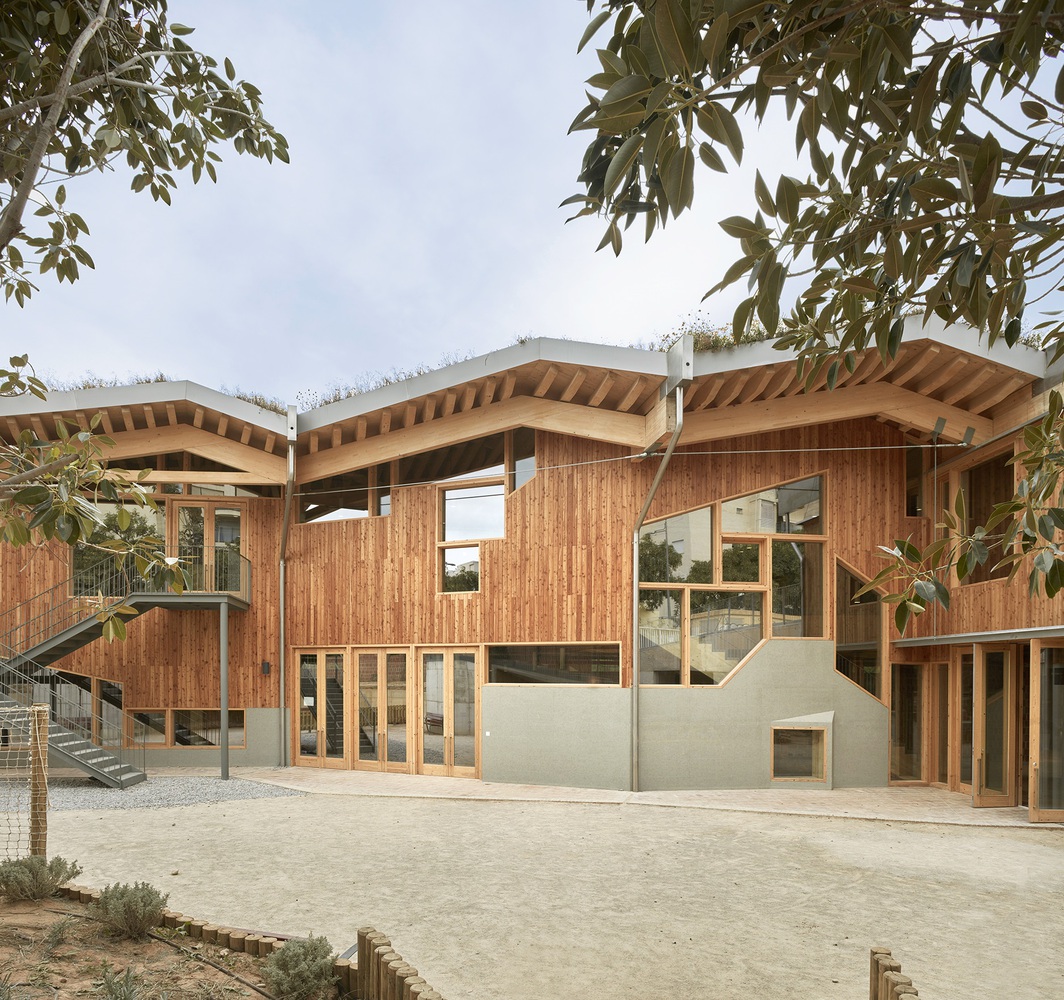
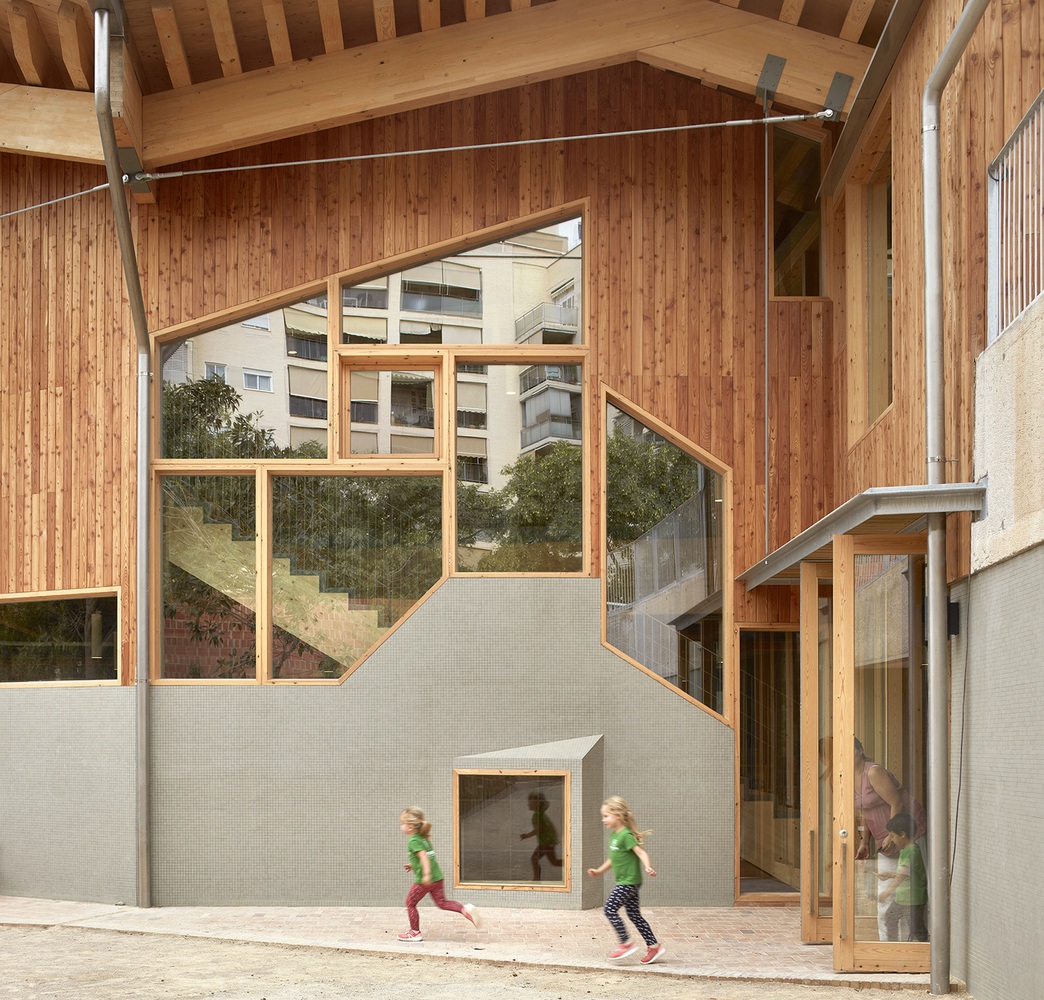
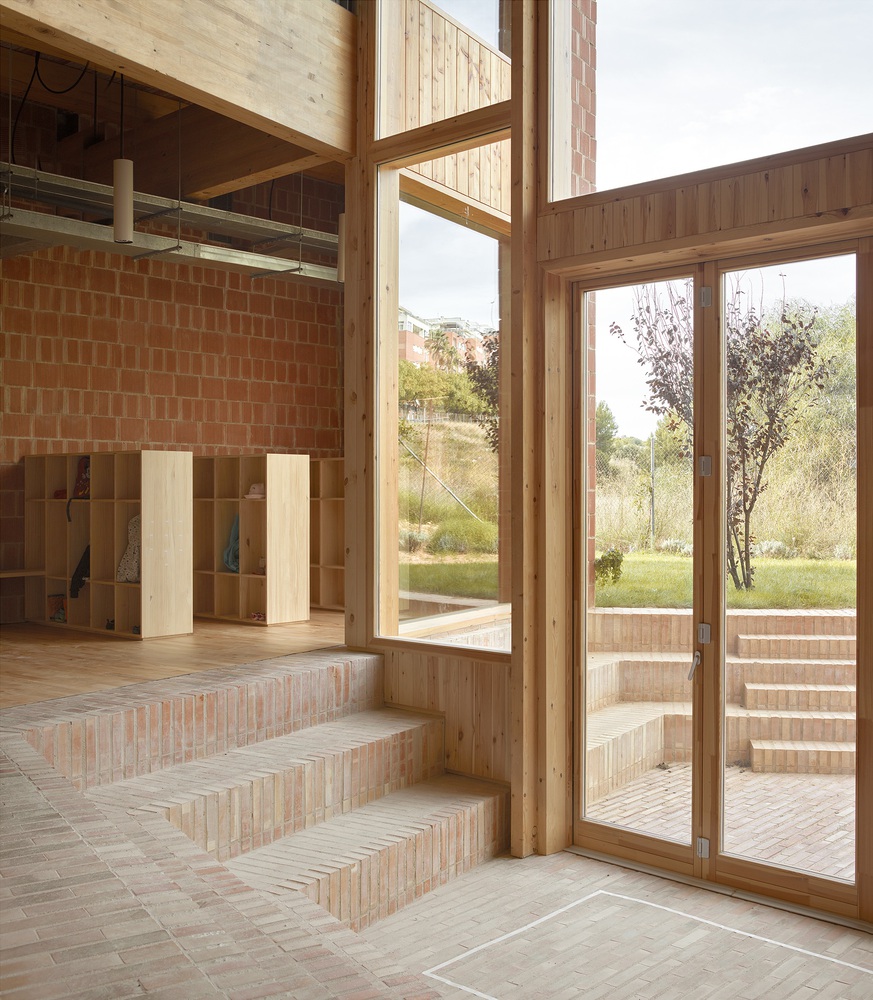
This work represents the first segment of an extensive project, consisting initially of 10 classrooms alongside a kitchen, facility, and storage spaces. The subsequent phase will include the entrance, administrative offices, teacher spaces, and meeting rooms.
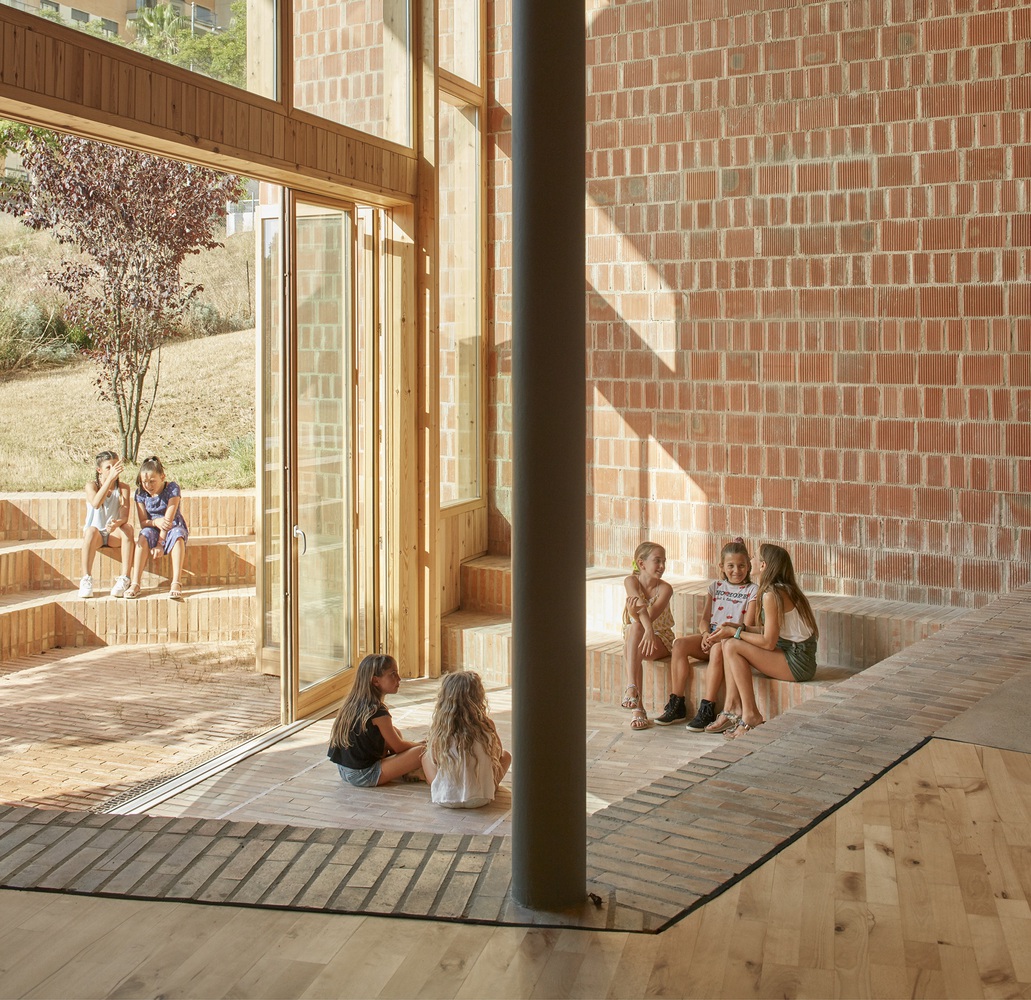
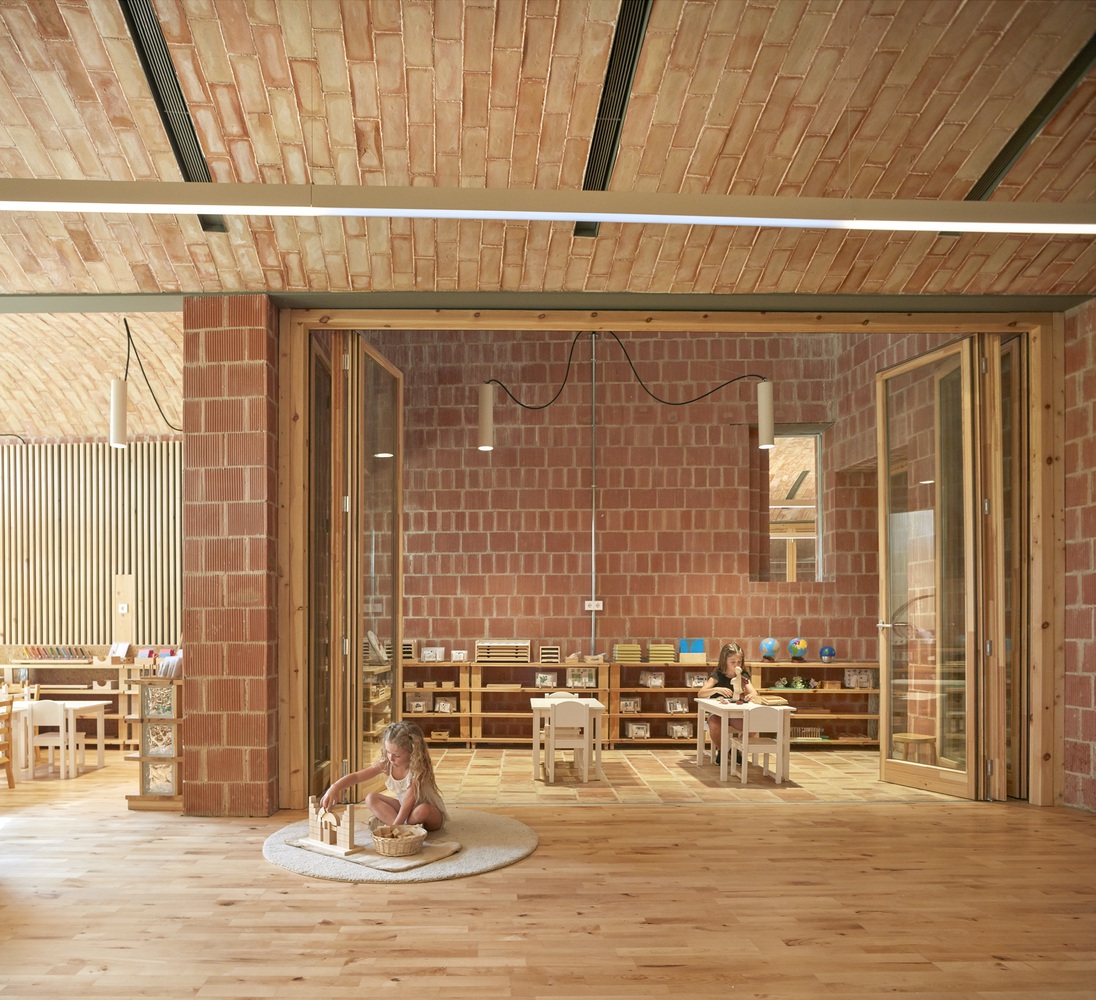
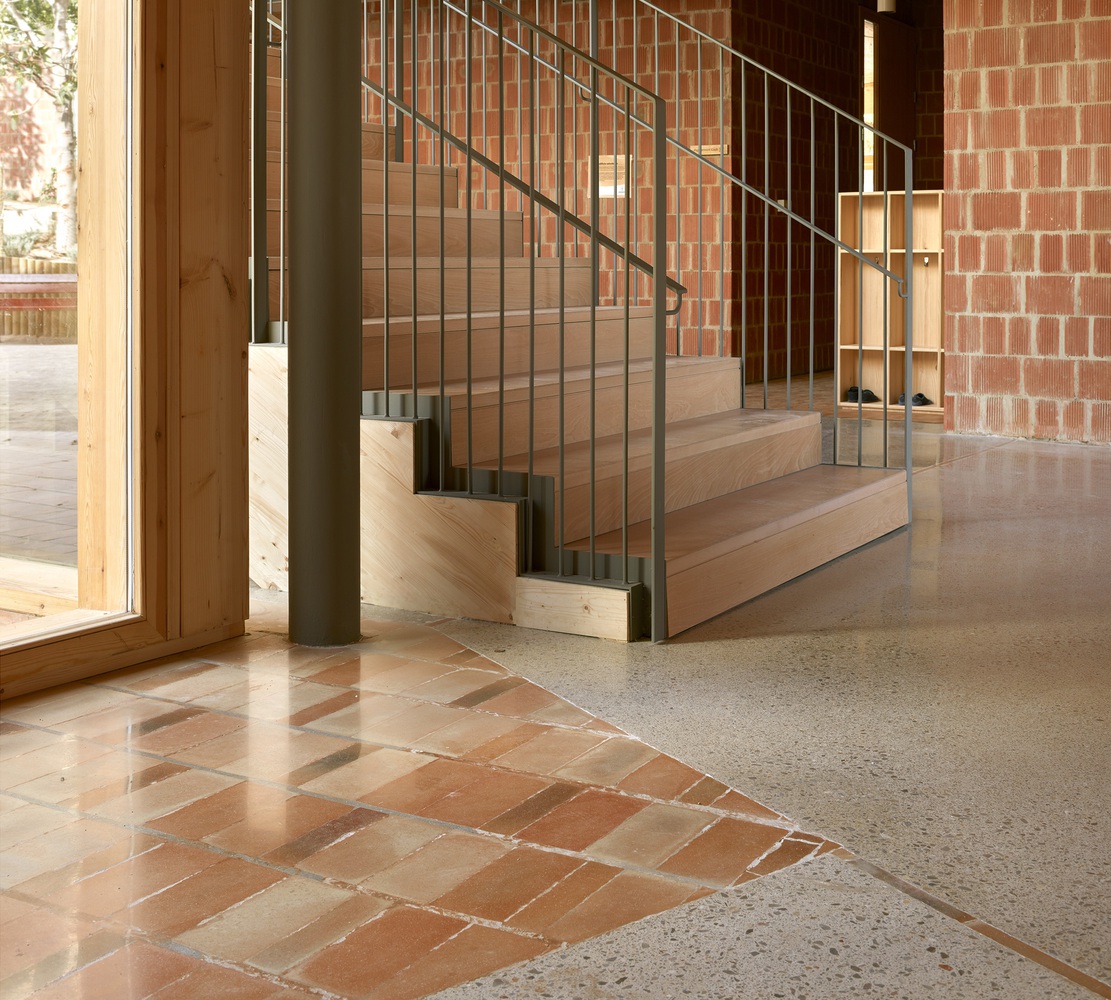
The building is strategically placed on the boundary of the Valterna residential area, in Paterna, Valencia. It lies on a designated public service strip between residential structures and the En Dolça ravine, dividing Valterna from the La Pinada urban development area. Remarkably, the main entrance faces the riverside rather than the city side to mitigate potential traffic issues, given the anticipated student inflow from across Valencia’s metropolitan region. Most students will arrive by private transport until the nearby La Pinada neighborhood develops further.
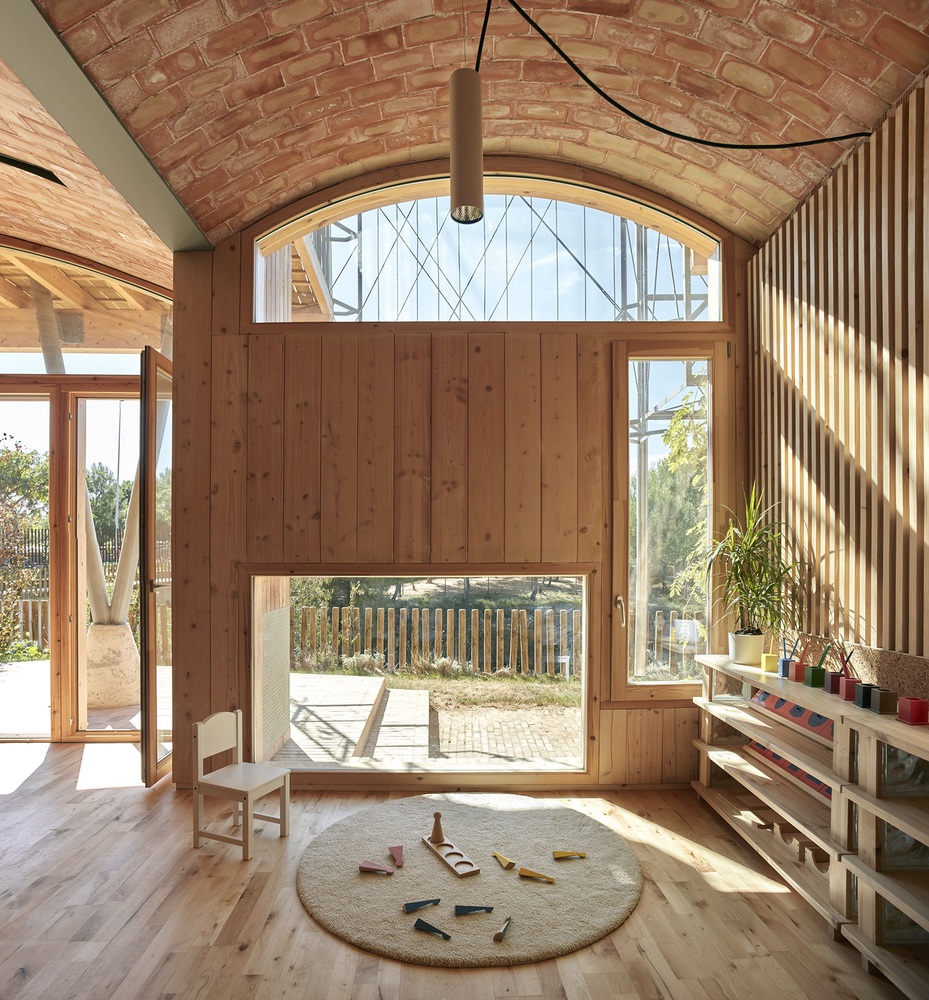
The ravine is vital to the project, serving as a central natural element while challenging the negative perceptions traditionally associated with such landscapes. Students access the school via elevated wooden walkways through a pine forest, offering them glimpses of the facility through the treetops. This path not only prepares them for their day at school but also serves as a communal space for parents.
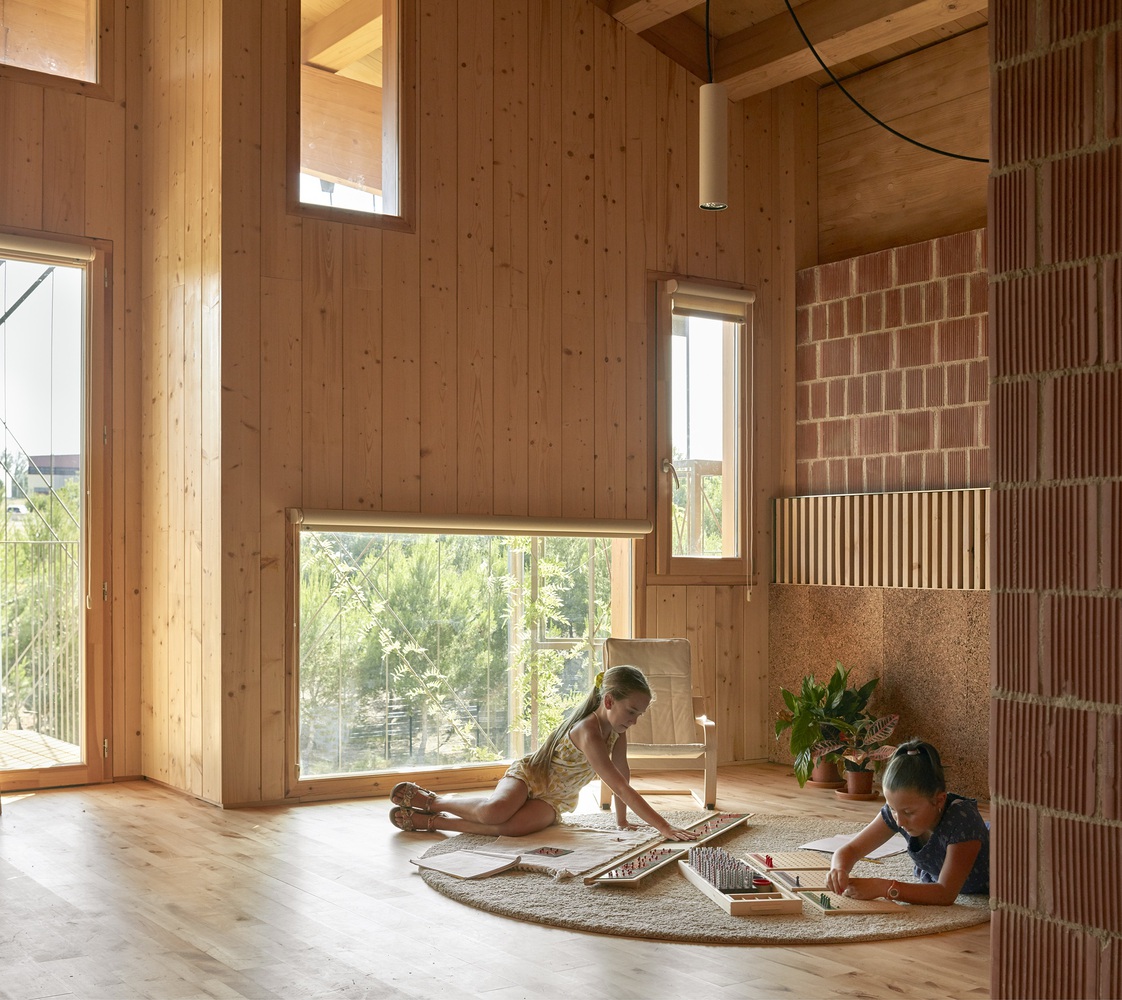
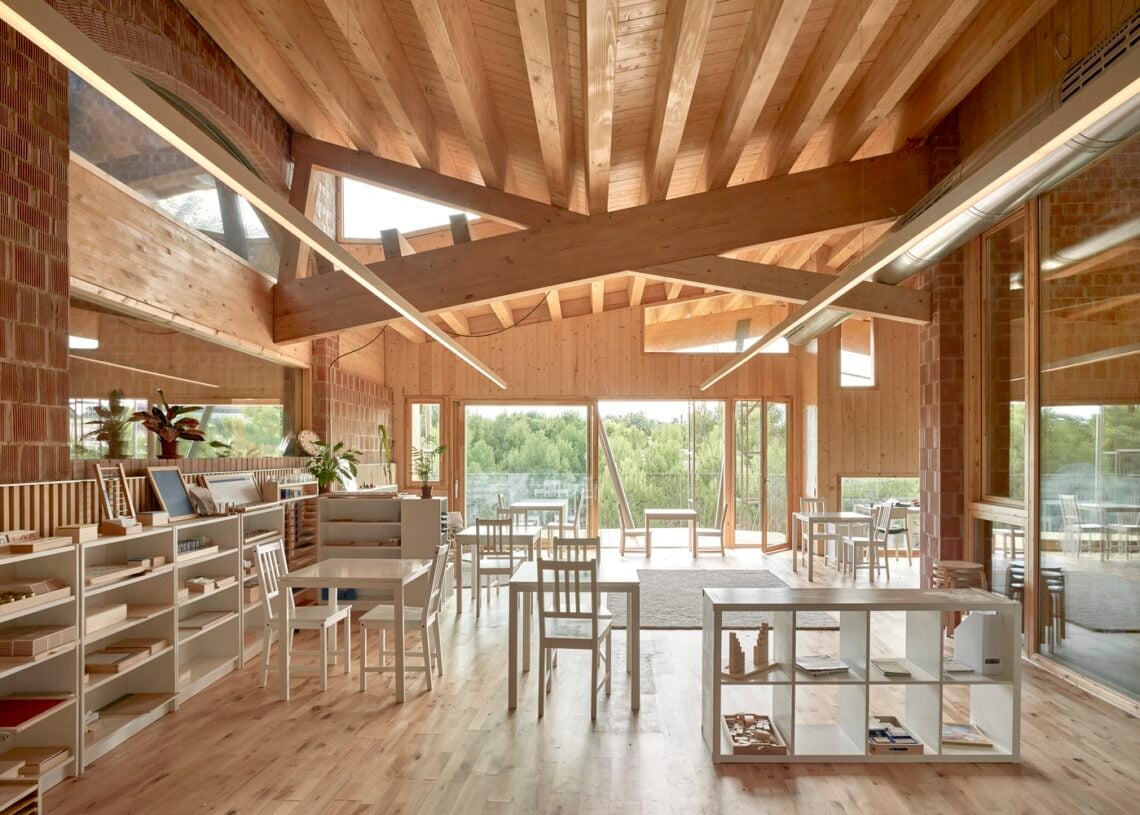
Internally, the building’s “S” shape creates distinct external areas: a westward access plaza and an eastward playground, enhancing spatial flexibility. All classrooms face the ravine, emphasizing a visual connection with nature, devoid of traditional educational barriers like blackboards or teacher’s desks. The classrooms are organized into five zones—sensory, practical life, language, math, and cultural studies—allowing students to move freely based on their interests.
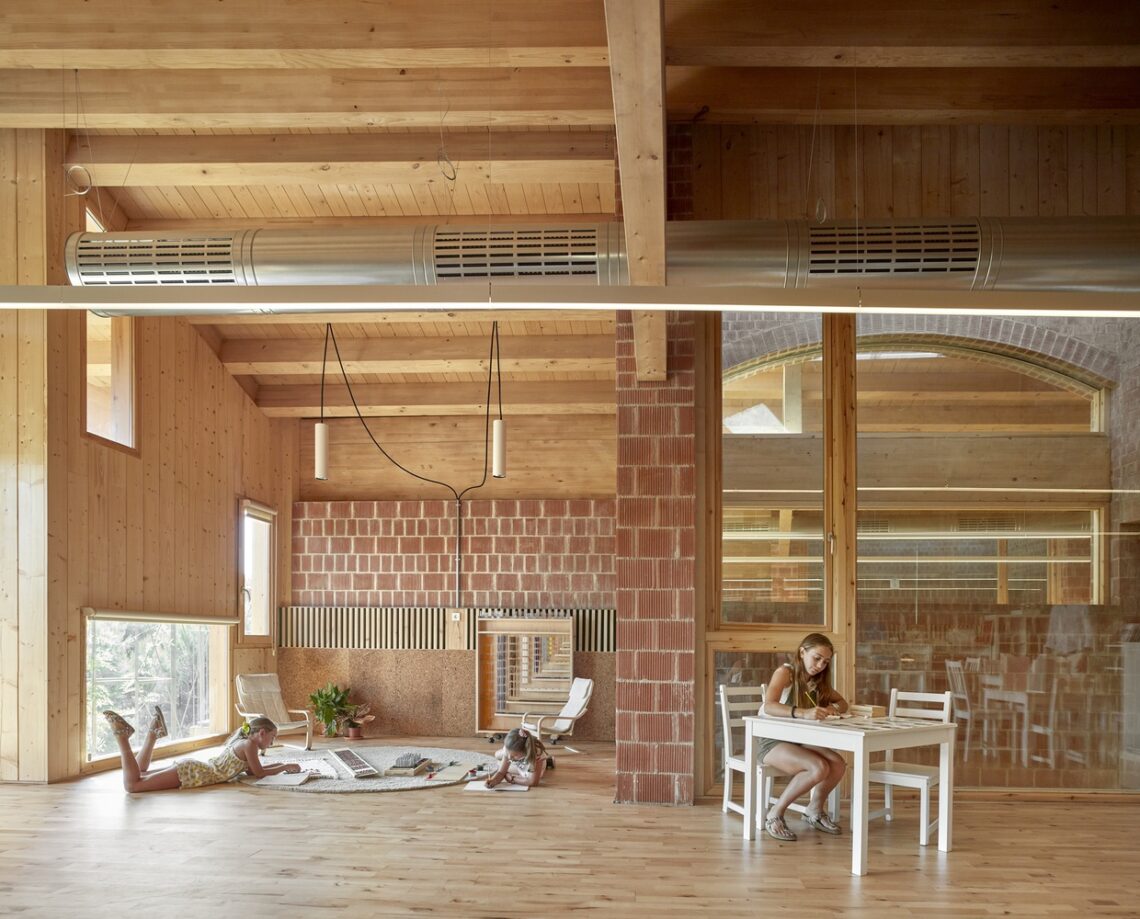
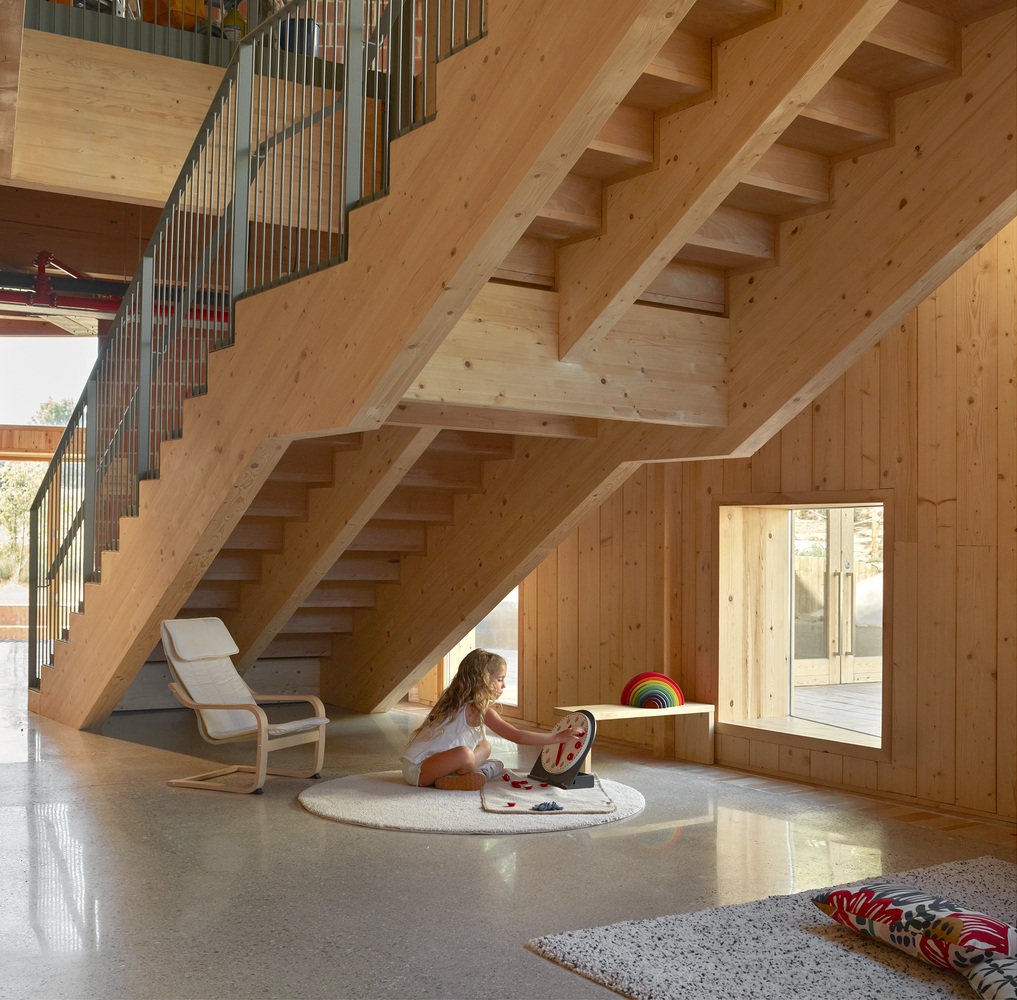
Entry to each classroom is through a lobby equipped with lockers and benches for personal item storage. The architecture here scales down to child-size dimensions, including low-rise arches indicating entry into child-friendly spaces.
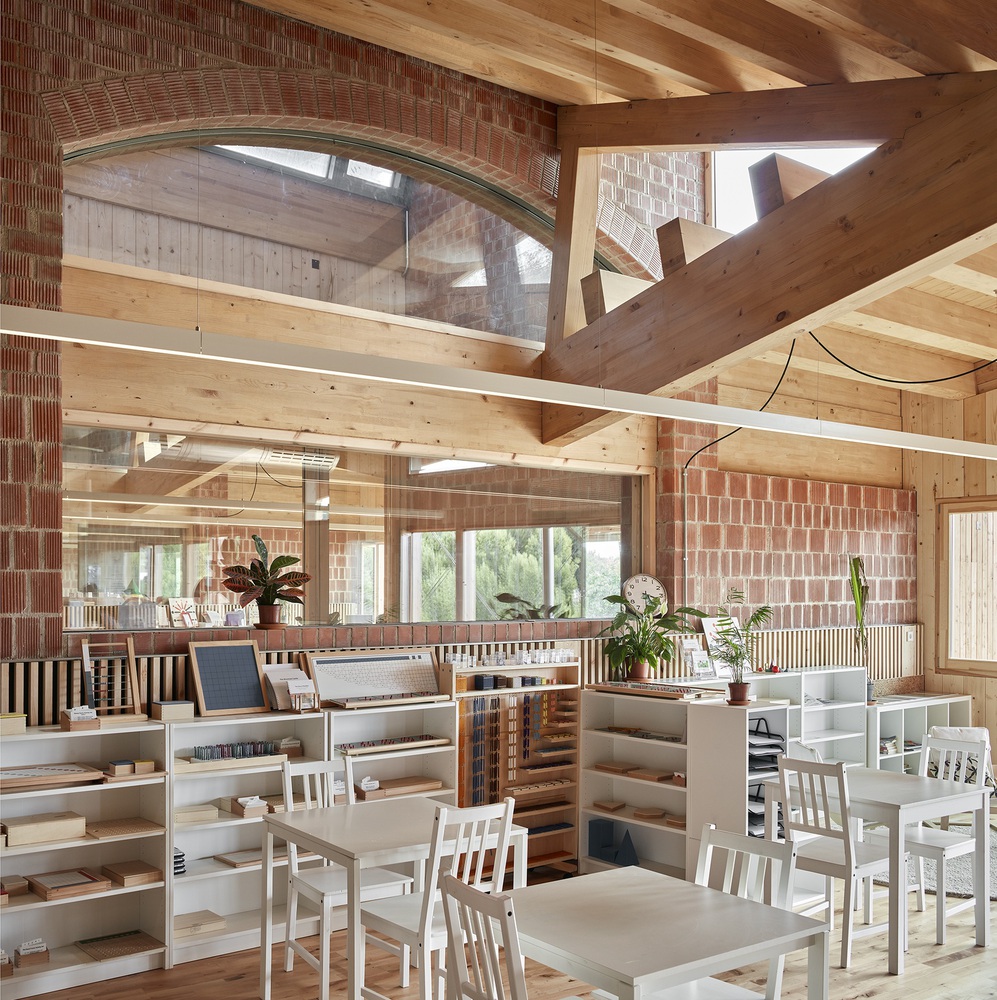
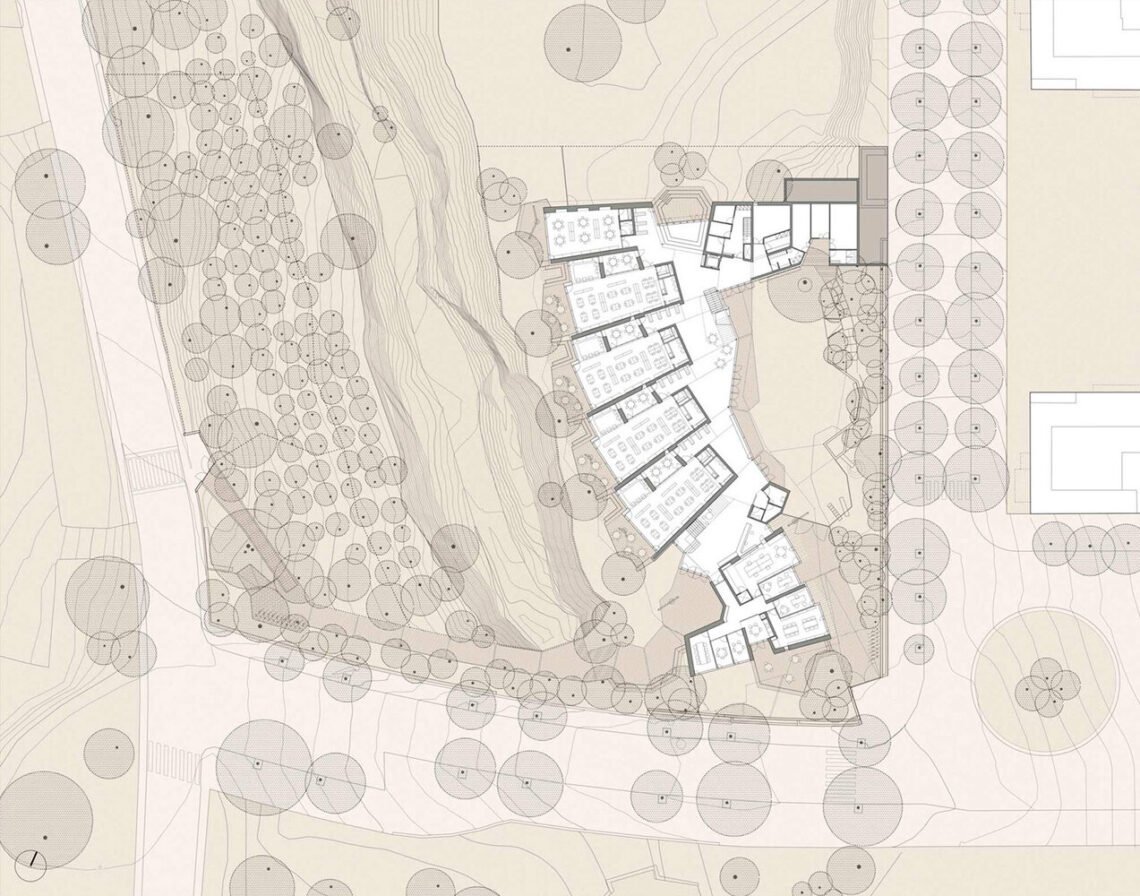
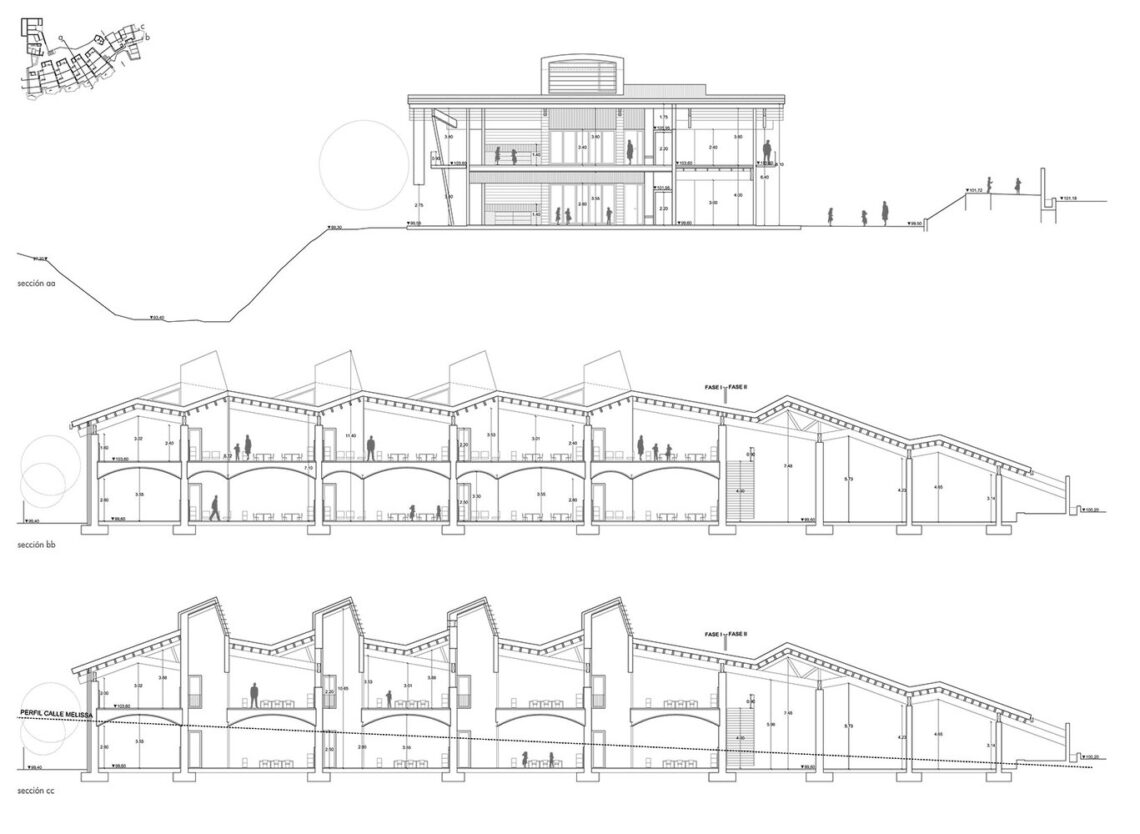
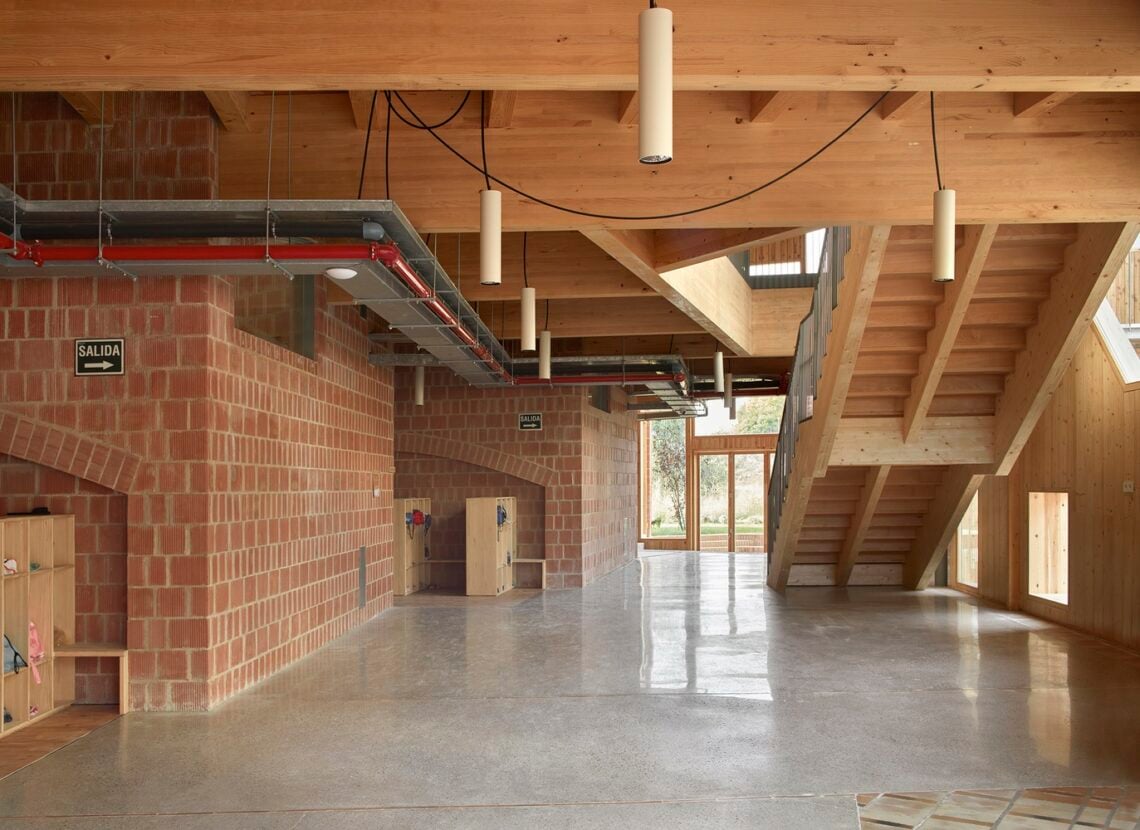
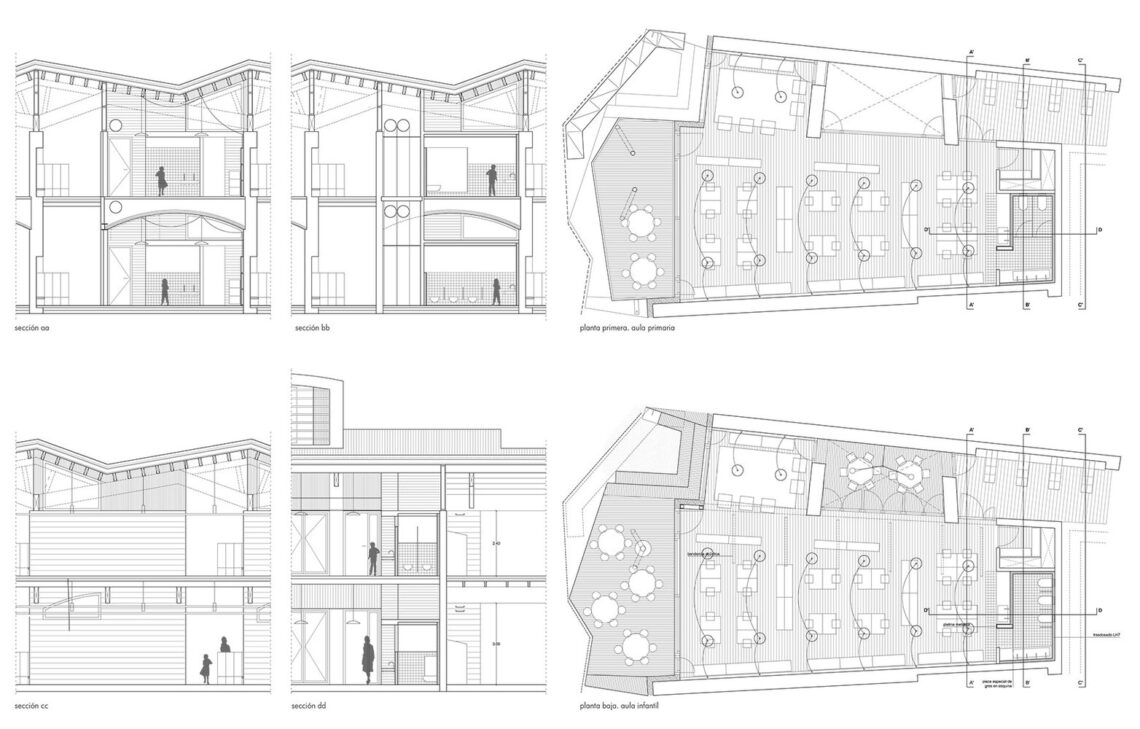
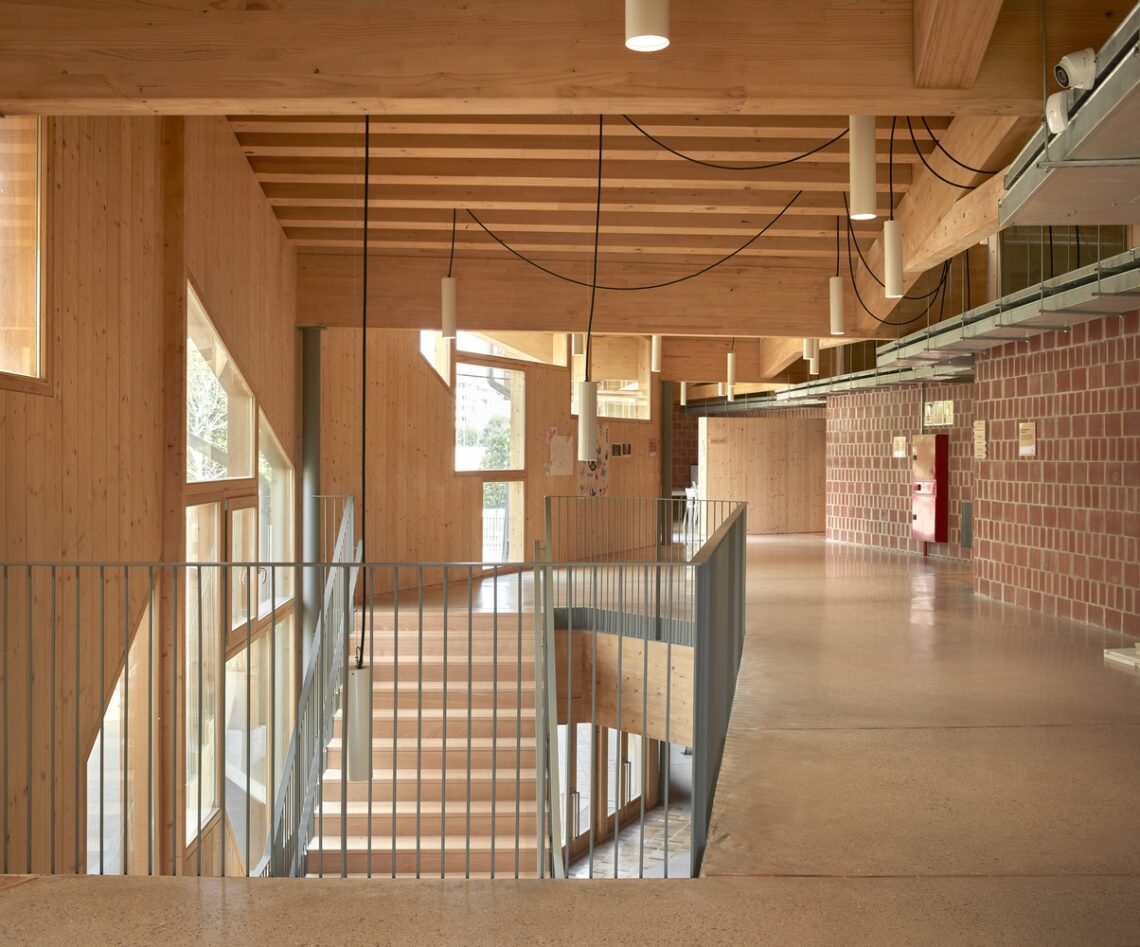
To optimize natural light and ventilation, the design includes triple-height ‘solar collectors’ centrally positioned to facilitate cross-views and additional communal space. Each classroom extends into an outdoor area featuring a covered terrace, amphitheater, fountain, and seasonal tree, enriching the learning environment.
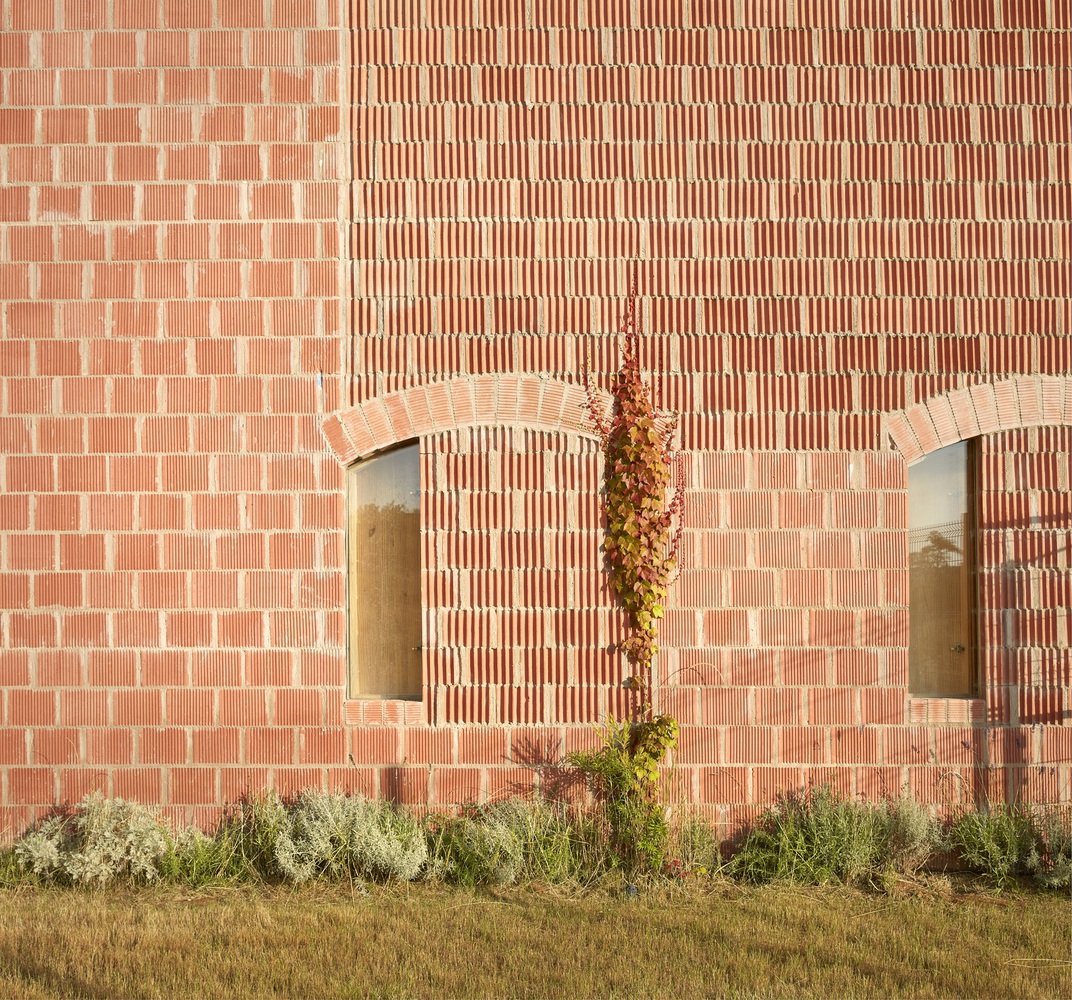
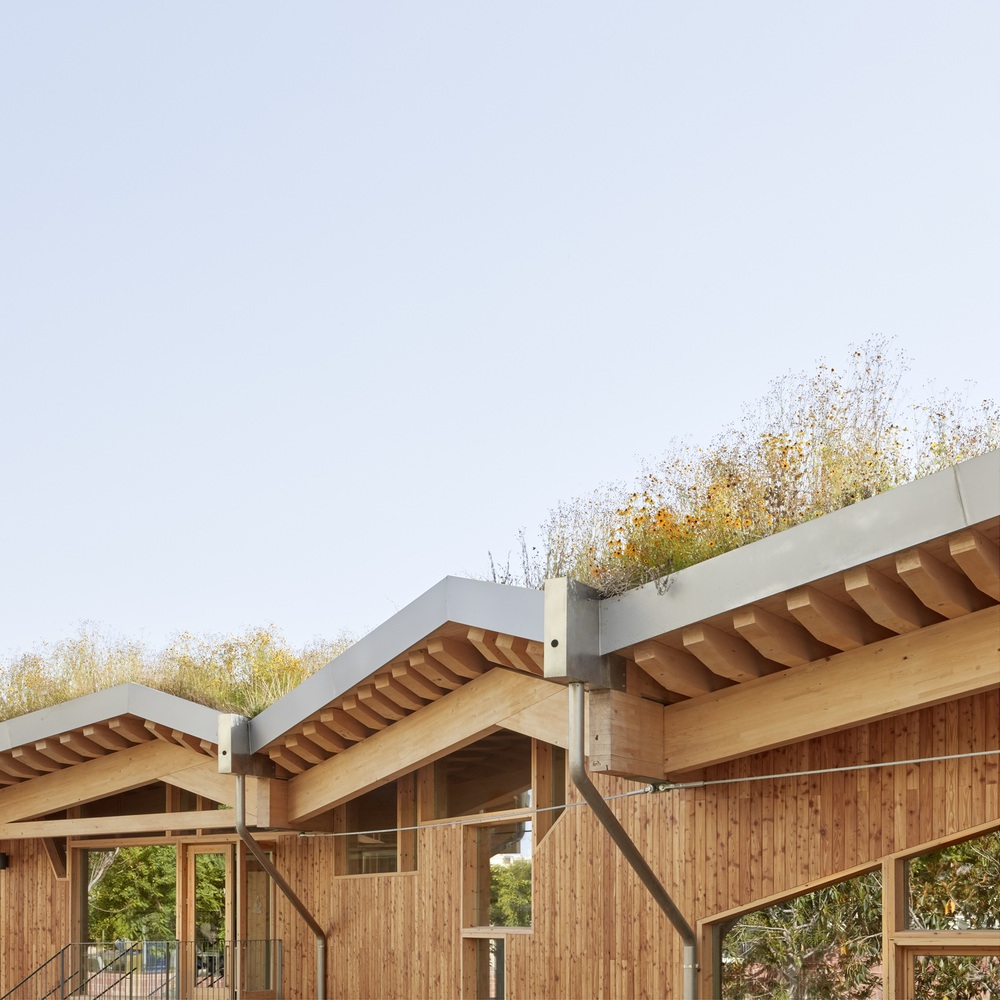
As the project evolves, each architectural ‘cell’ adapts to specific needs, fostering a sense of community in the interconnecting spaces, which include nooks, crannies, balconies, and outdoor walkways. These areas serve not just as passageways but as dynamic spaces for interaction, embodying an agora that opens outwards.
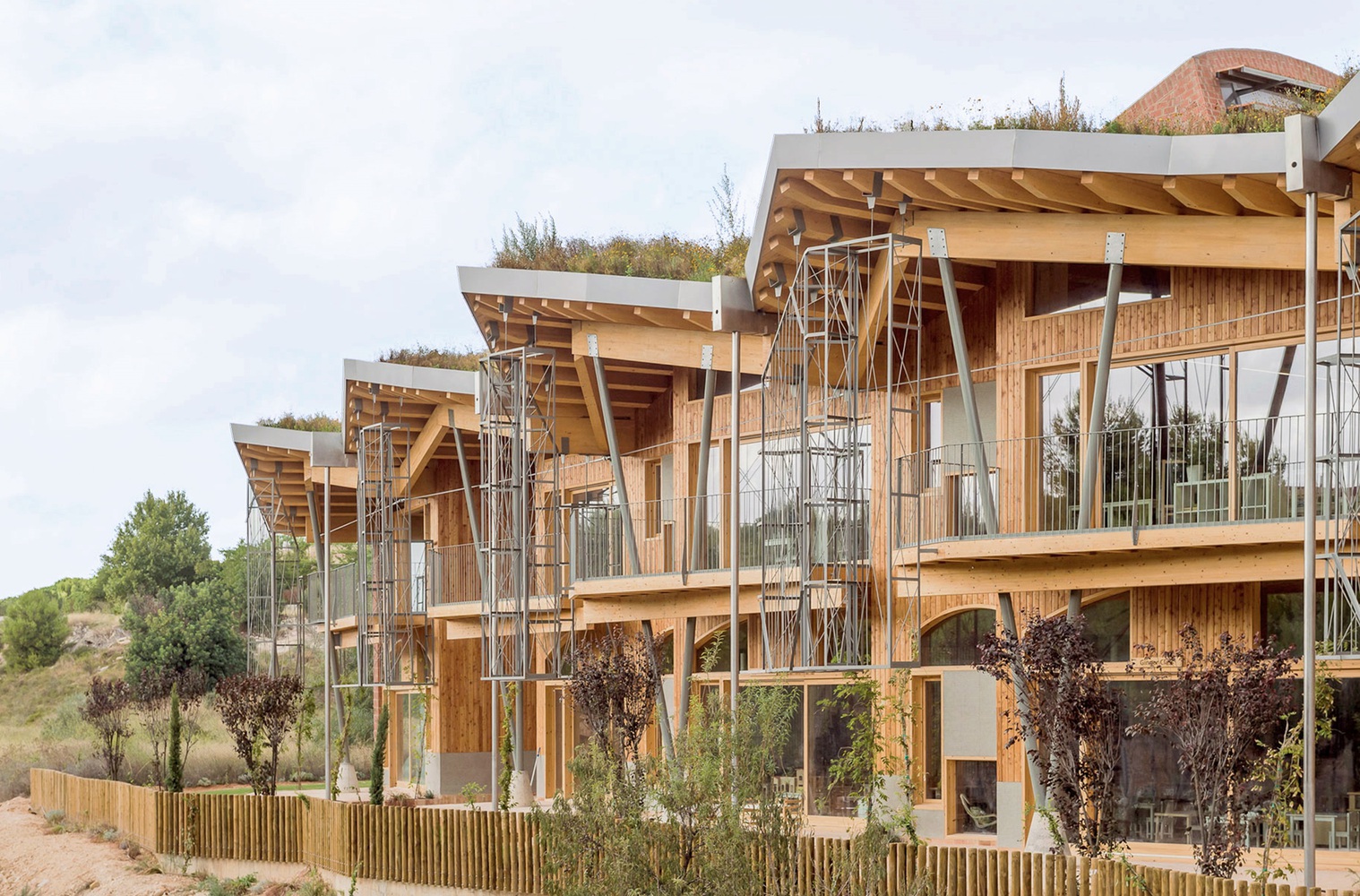
The materials chosen—primarily terracotta and wood—reflect a commitment to ecological sustainability. The terracotta is used in load-bearing walls and structural vaults, while wood features structural elements and finishes. Concrete and steel are restricted to foundational and specialized uses, emphasizing a raw, exposed aesthetic that enhances the educational experience by making the building’s functional aspects visible and understandable.
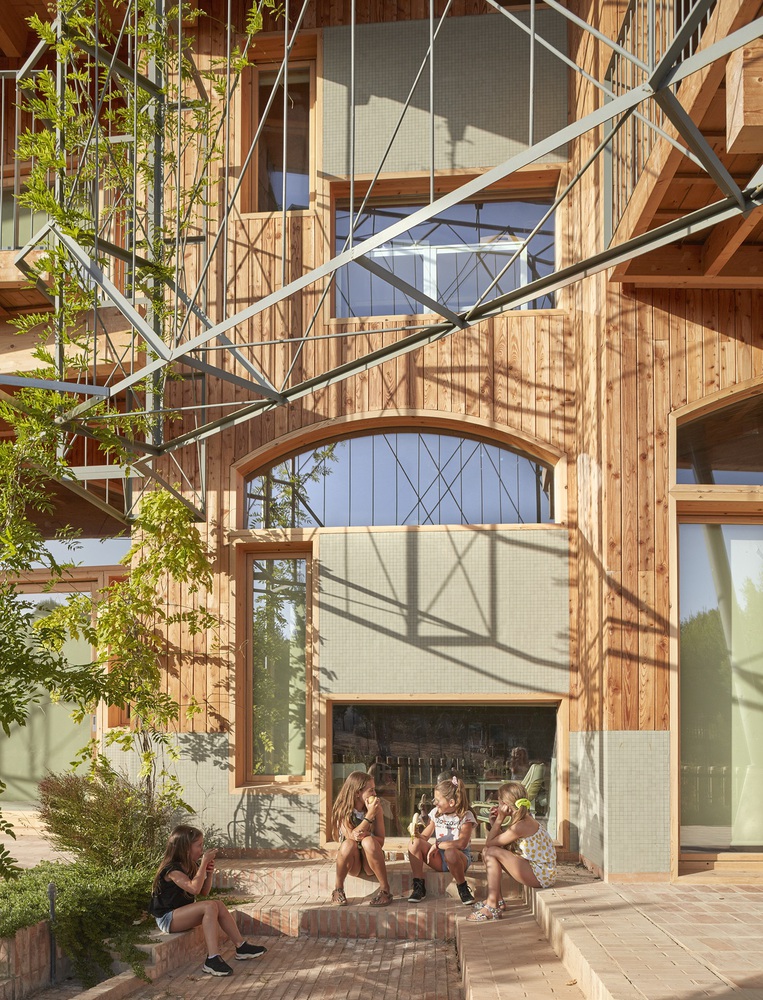
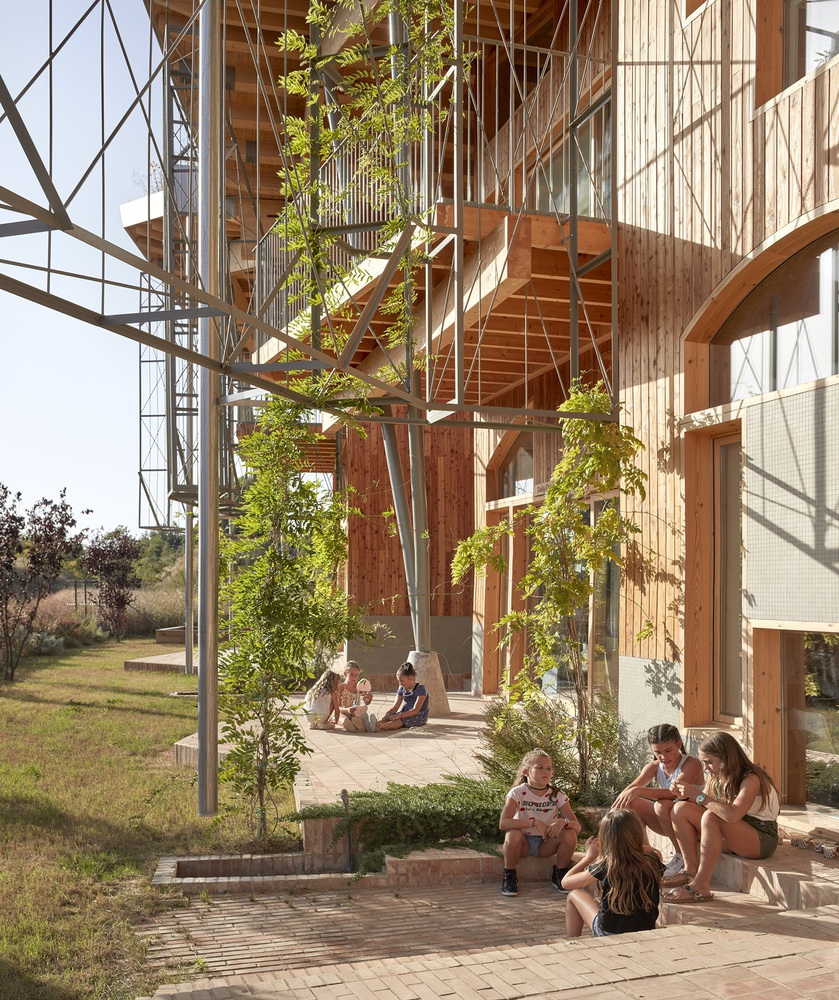
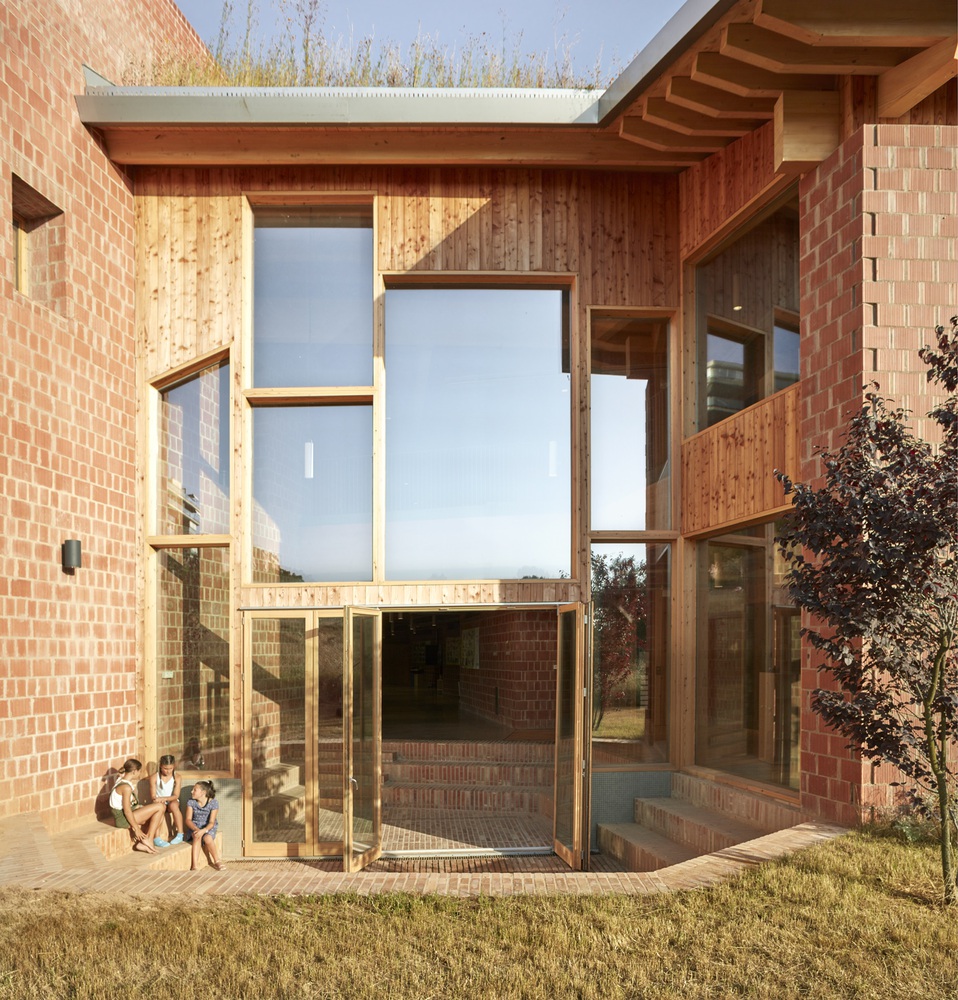
The integration of these materials extends outdoors where the playgrounds and gardens are composed of natural elements like roots and branches, avoiding artificial components. The landscape design utilizes the natural topography for creating interactive features such as ramps and climbing walls, promoting an engaging and inclusive environment.
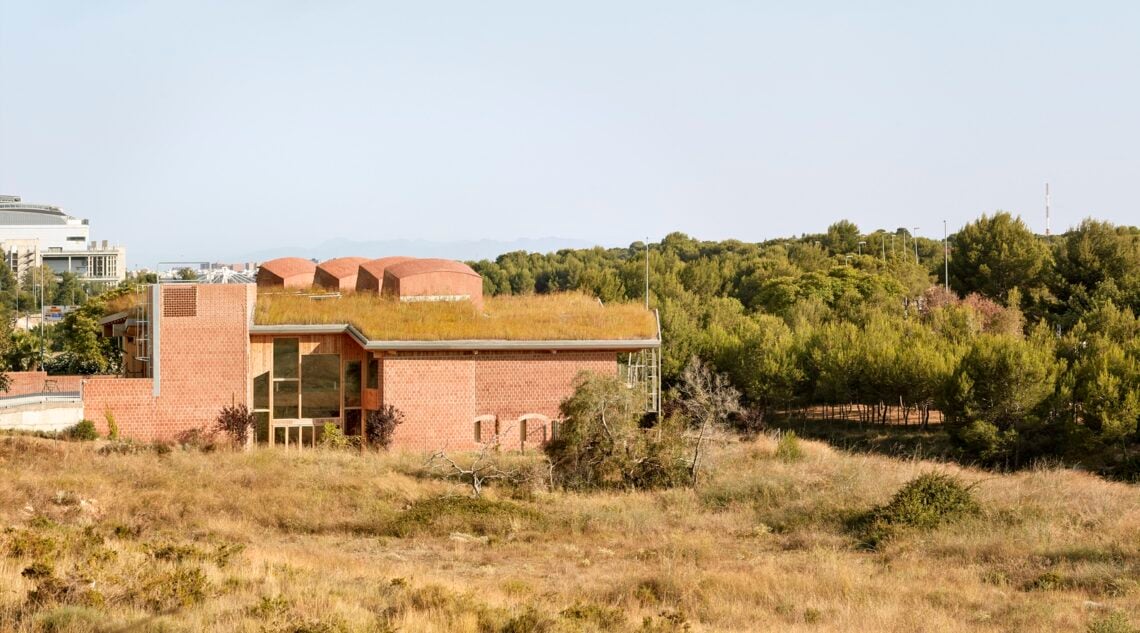
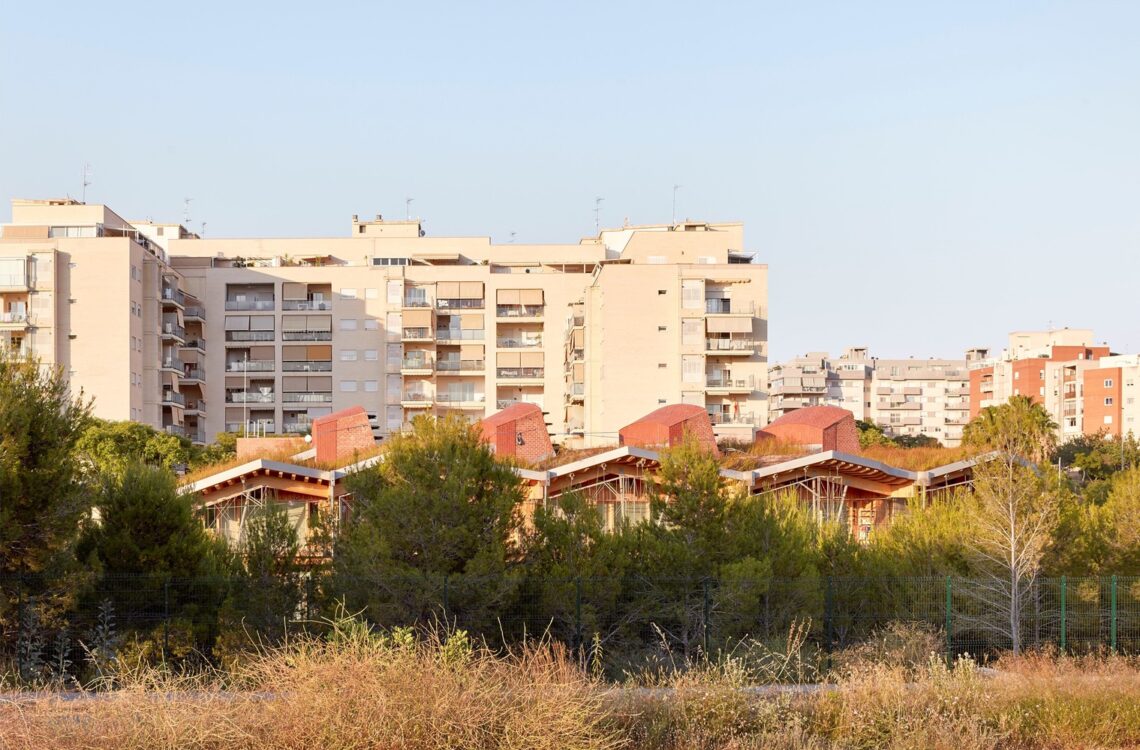
The project not only serves educational purposes but also acts as a didactic tool itself, with every component—from structure to finish—designed to educate and integrate with the natural environment. This approach ensures that the school blends into the landscape, particularly once the second phase adds a green roof that melds into the surrounding topography, creating a building that is as much a part of its environment as the educational ethos it fosters.
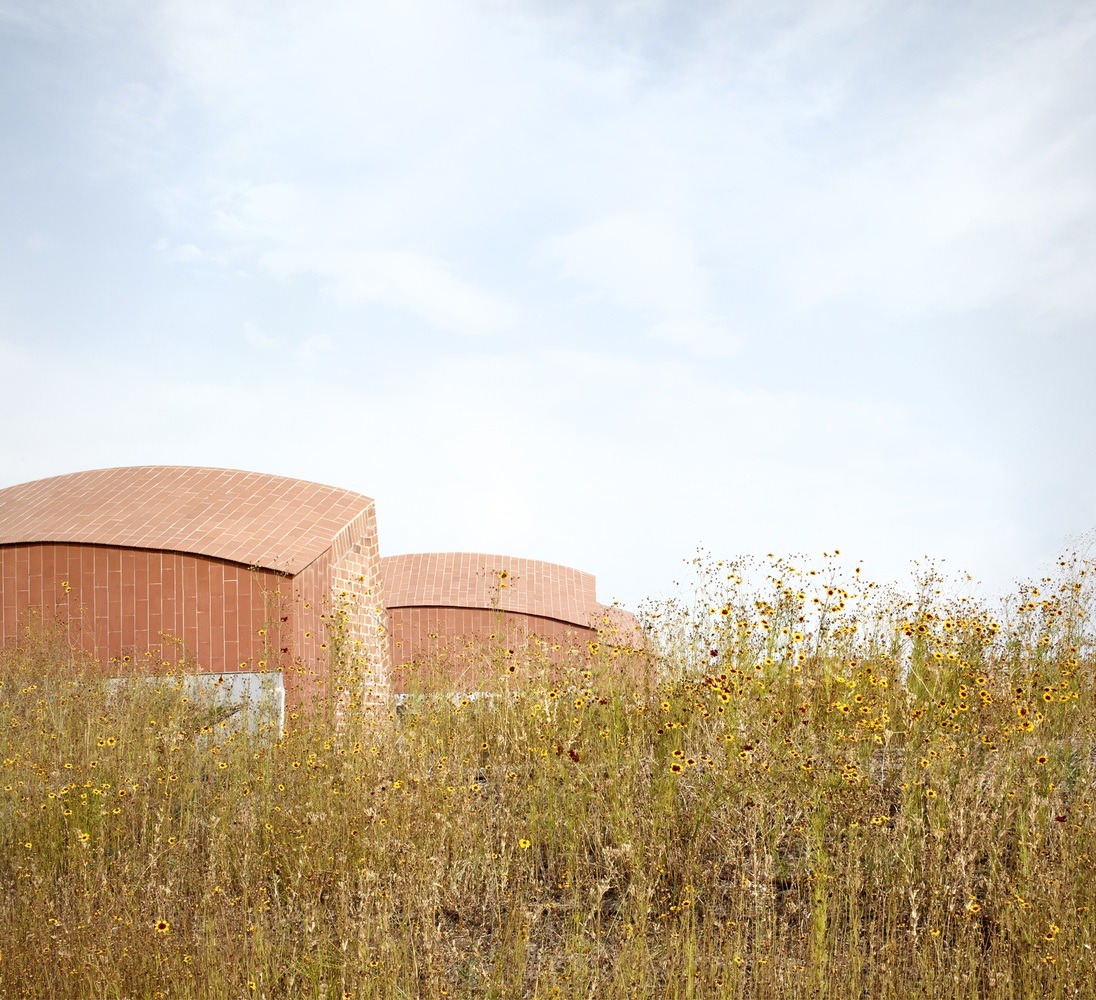
Project Gallery
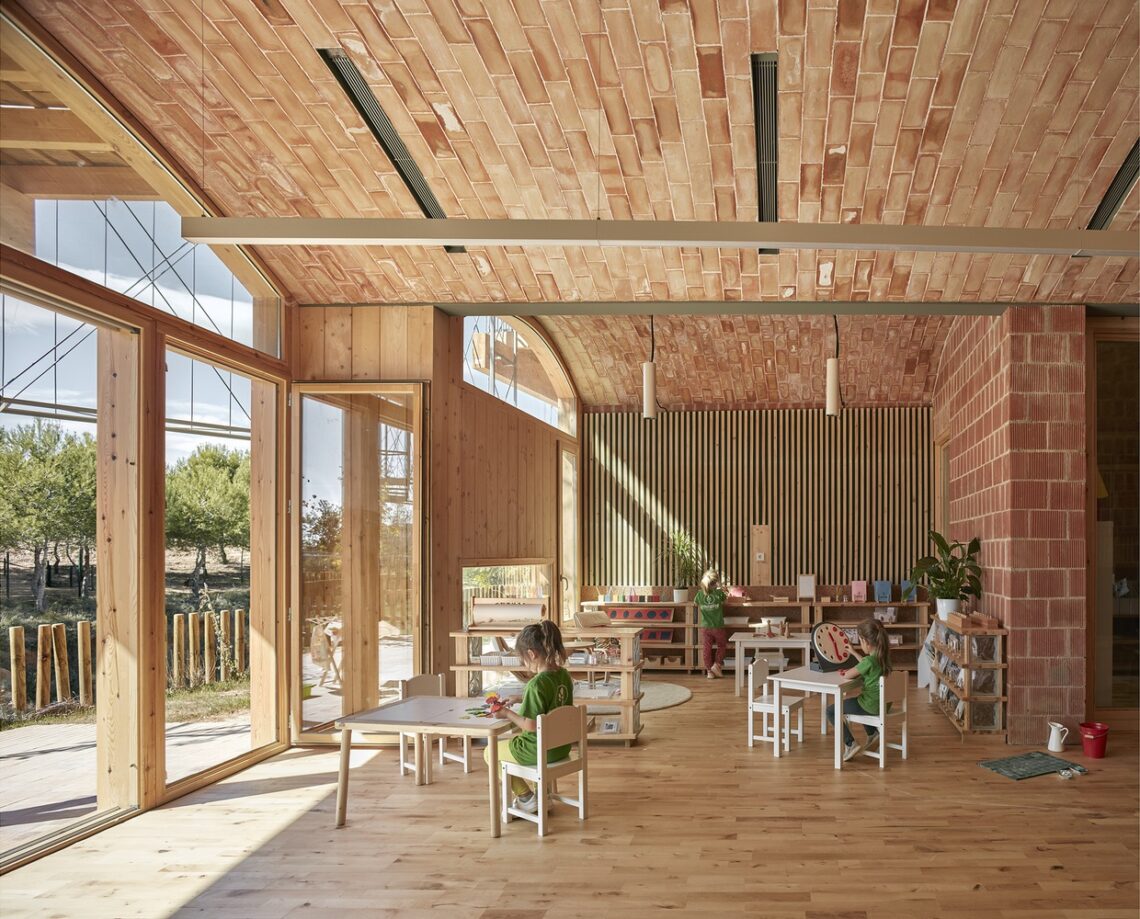
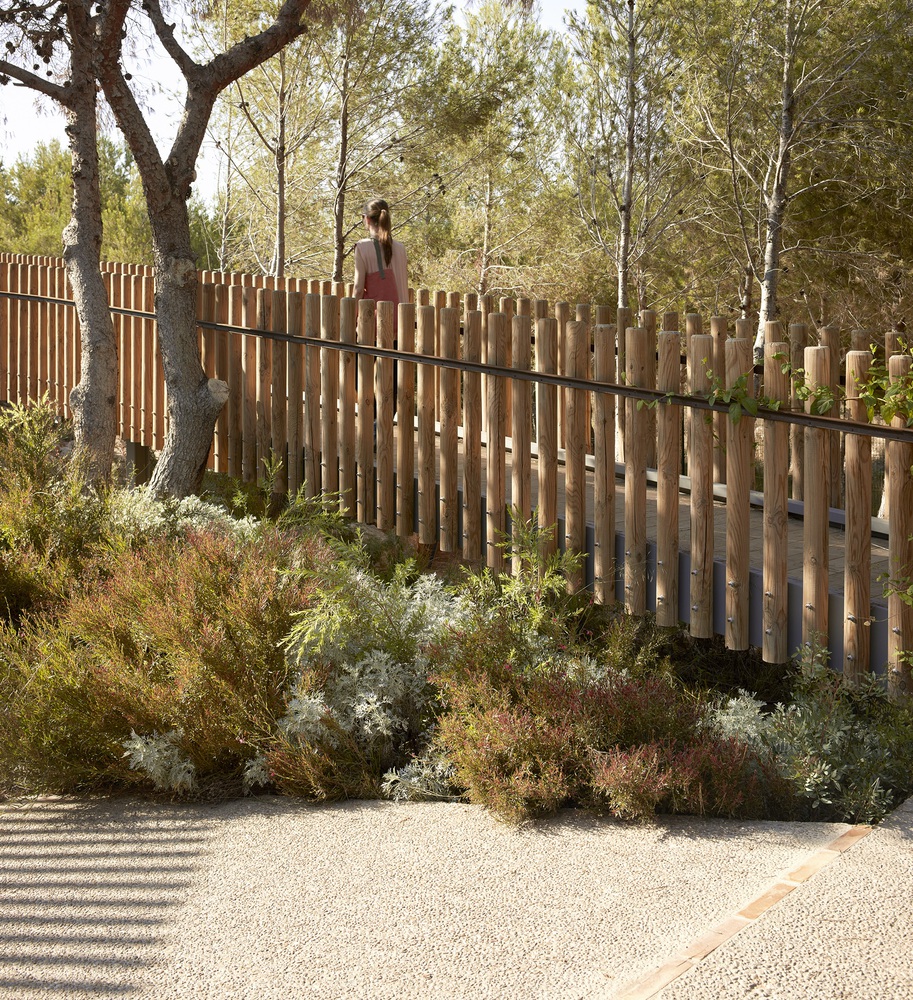
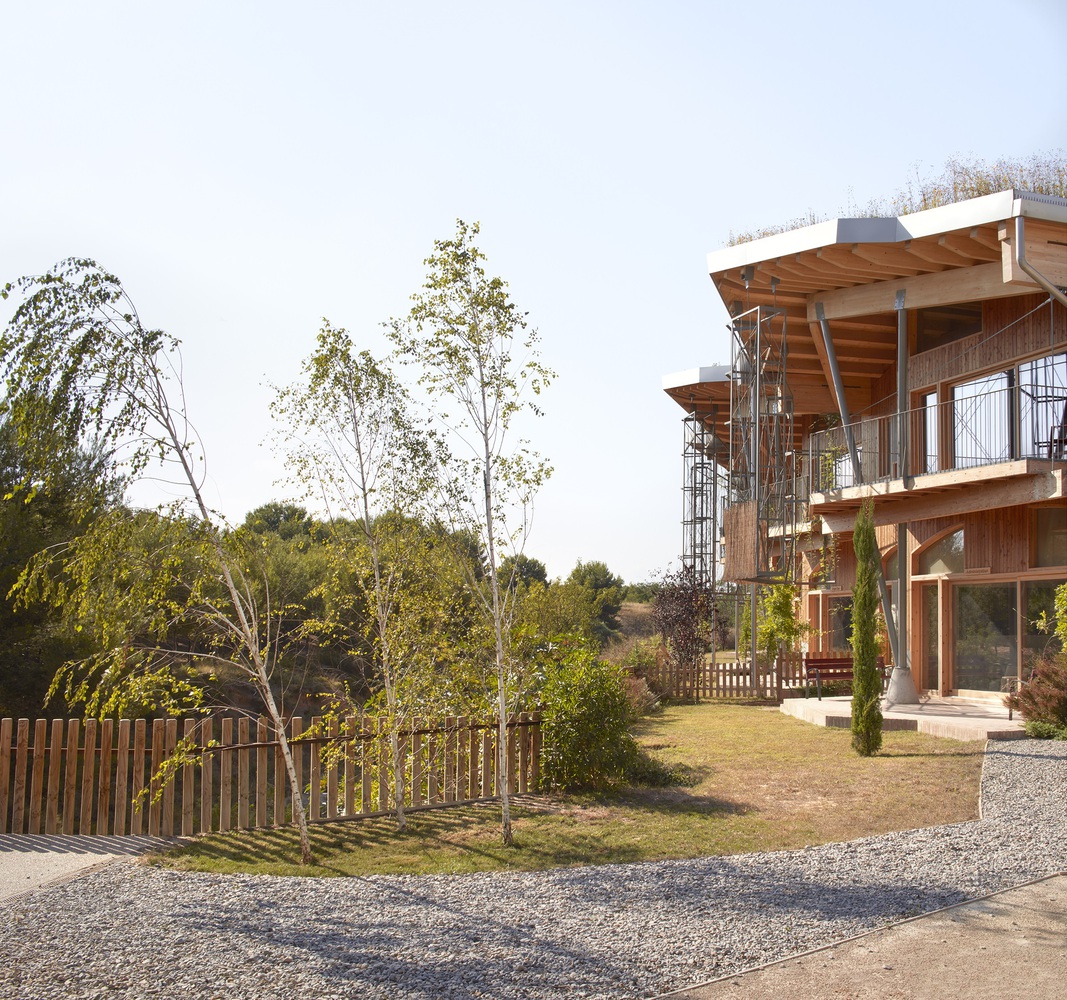


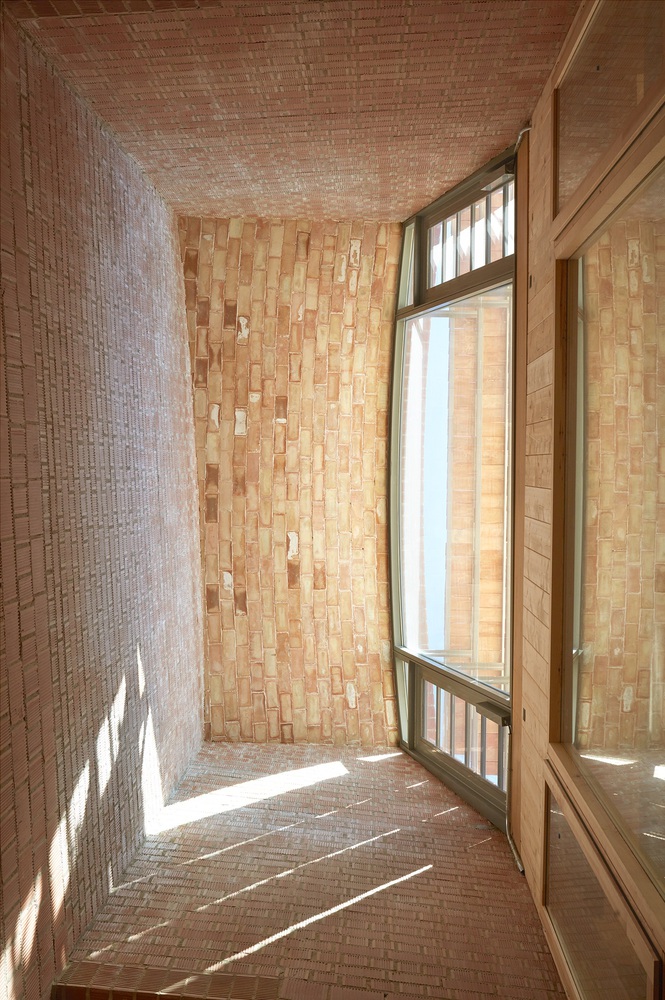
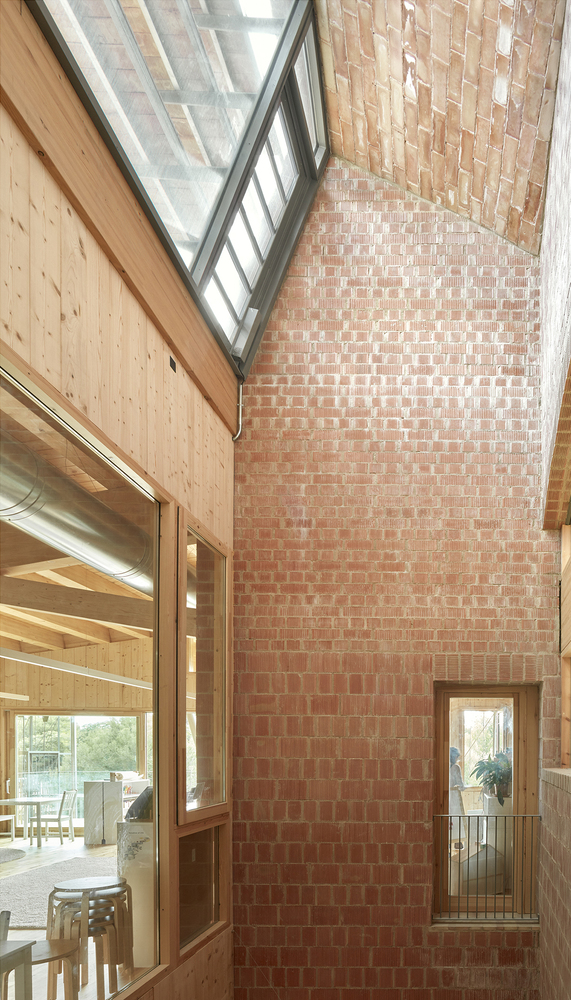
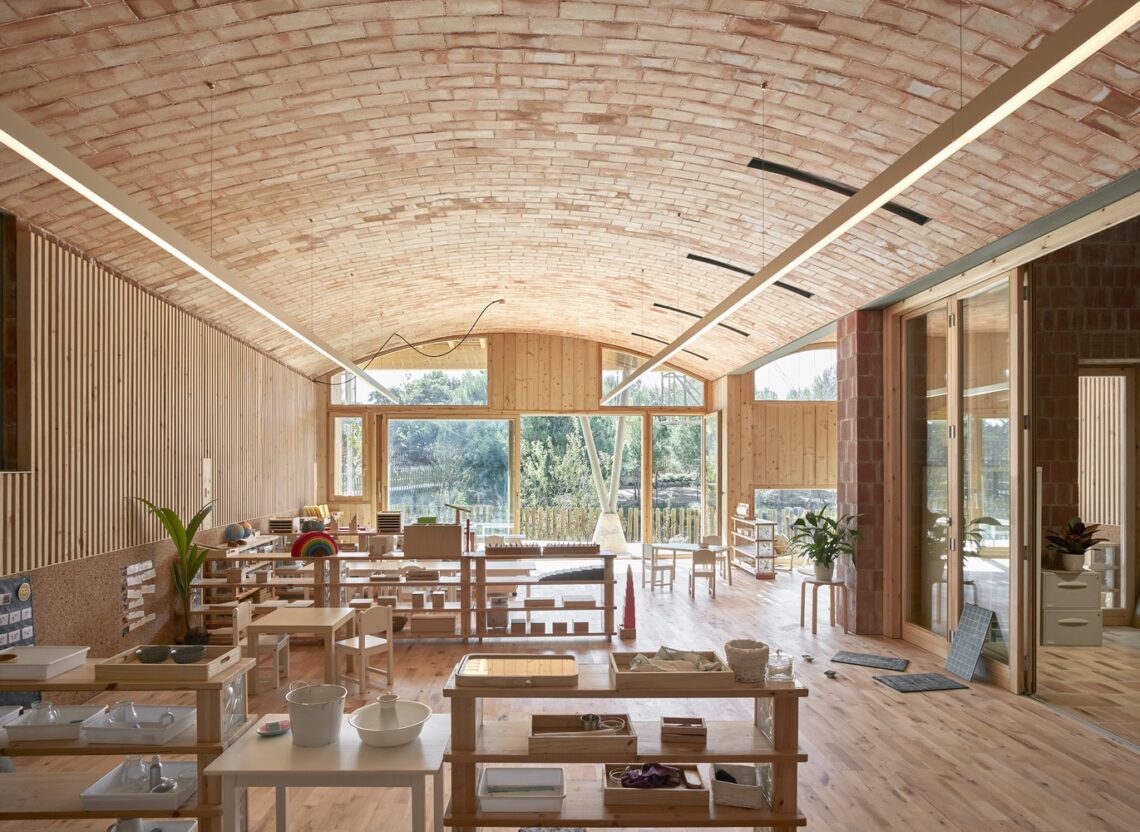
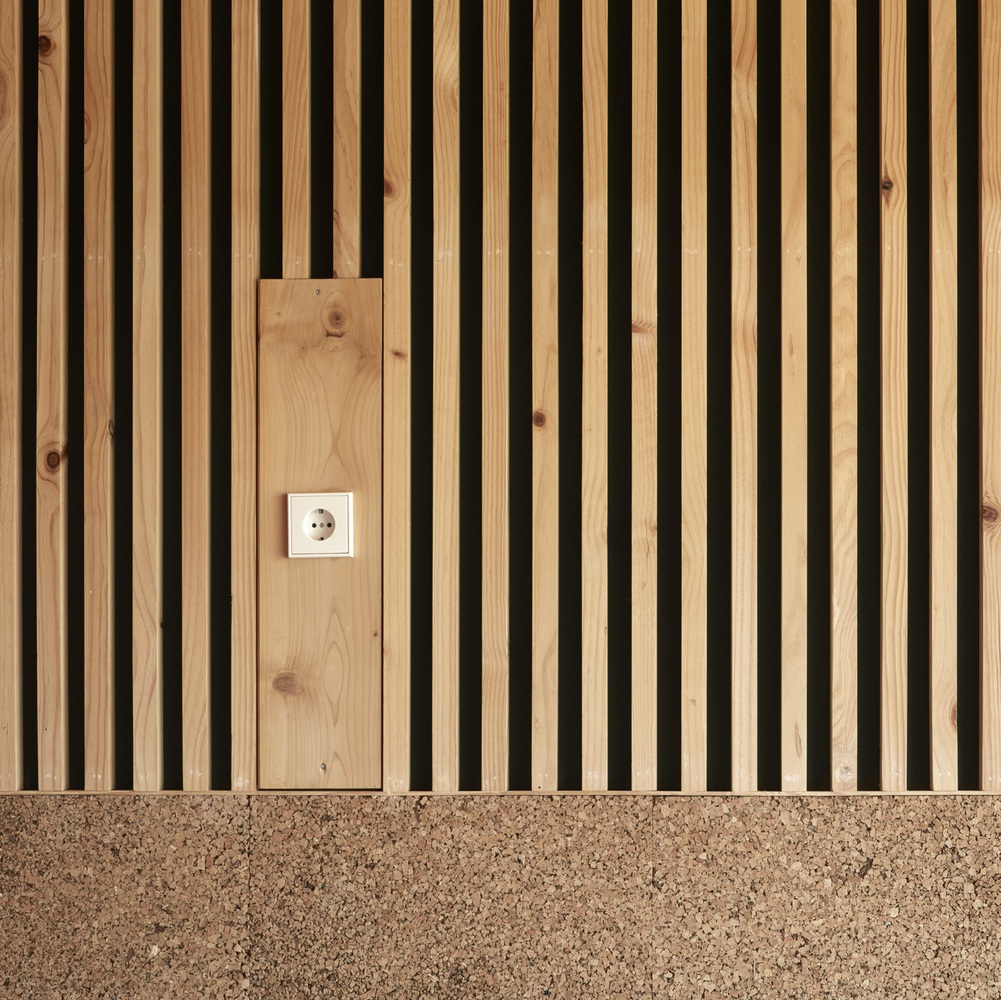




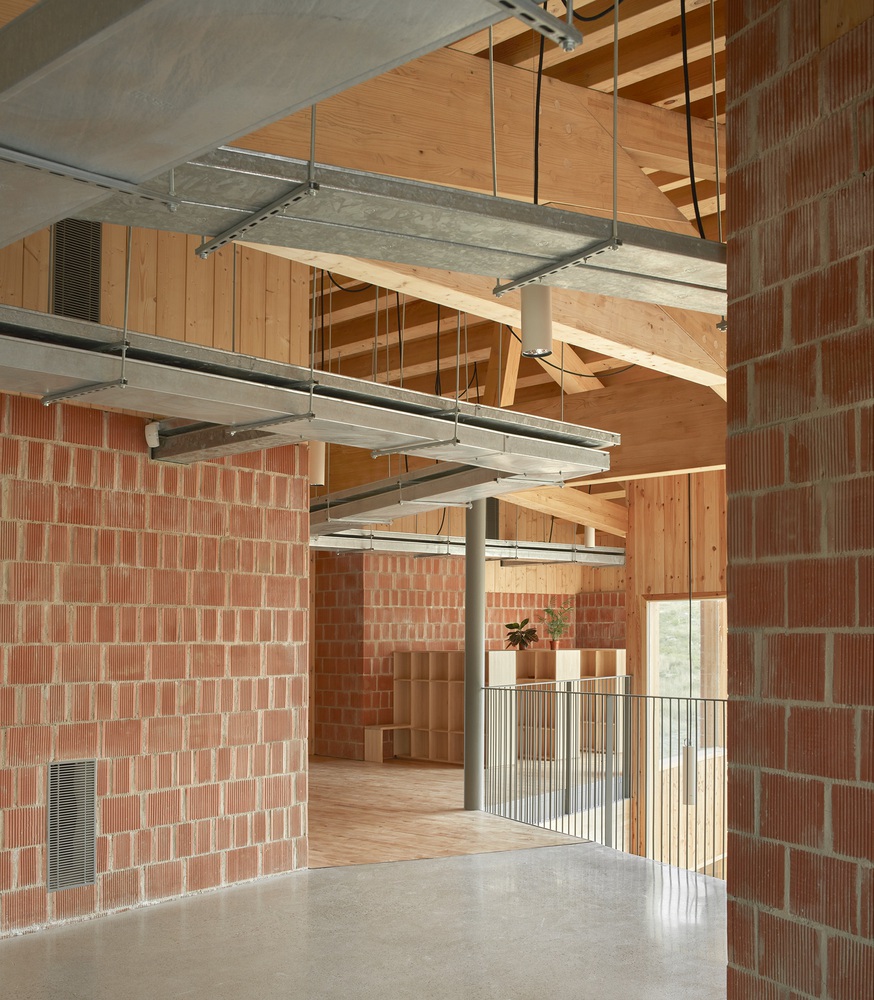




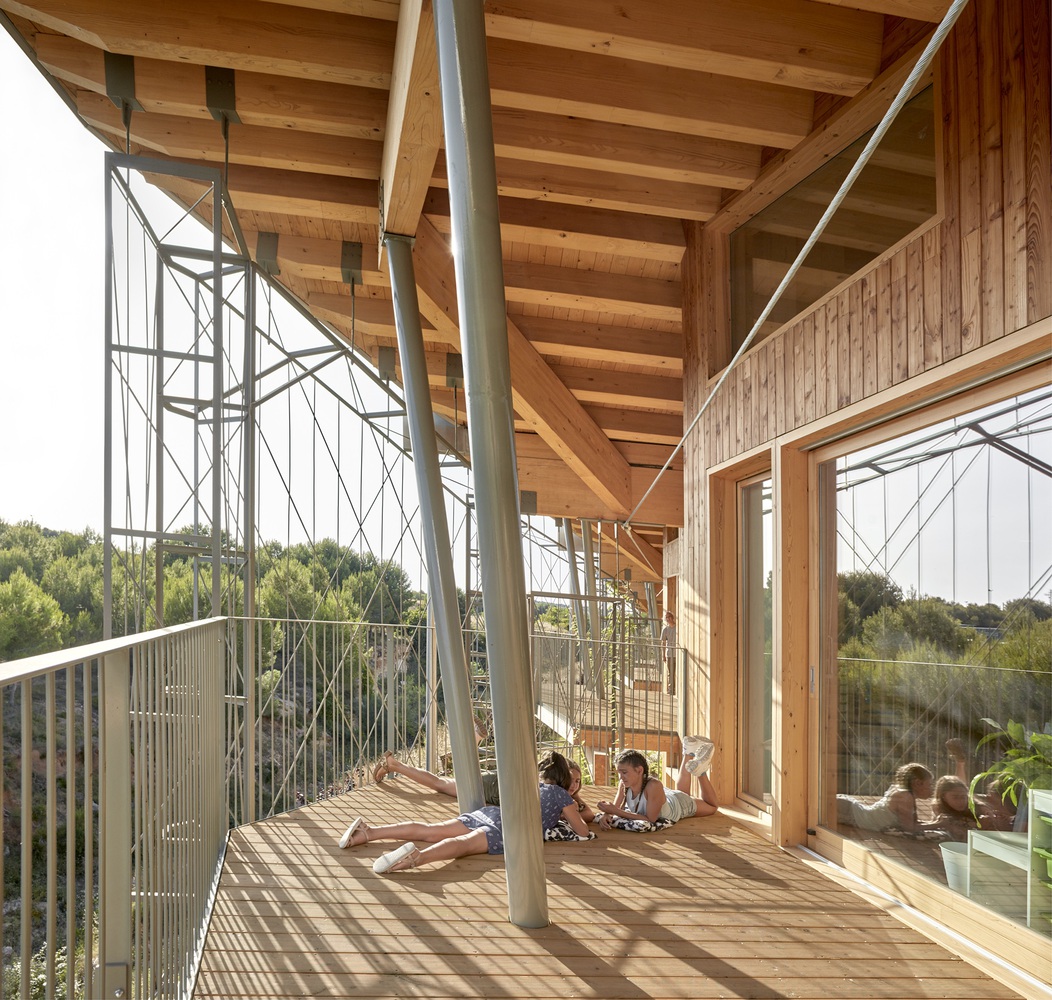






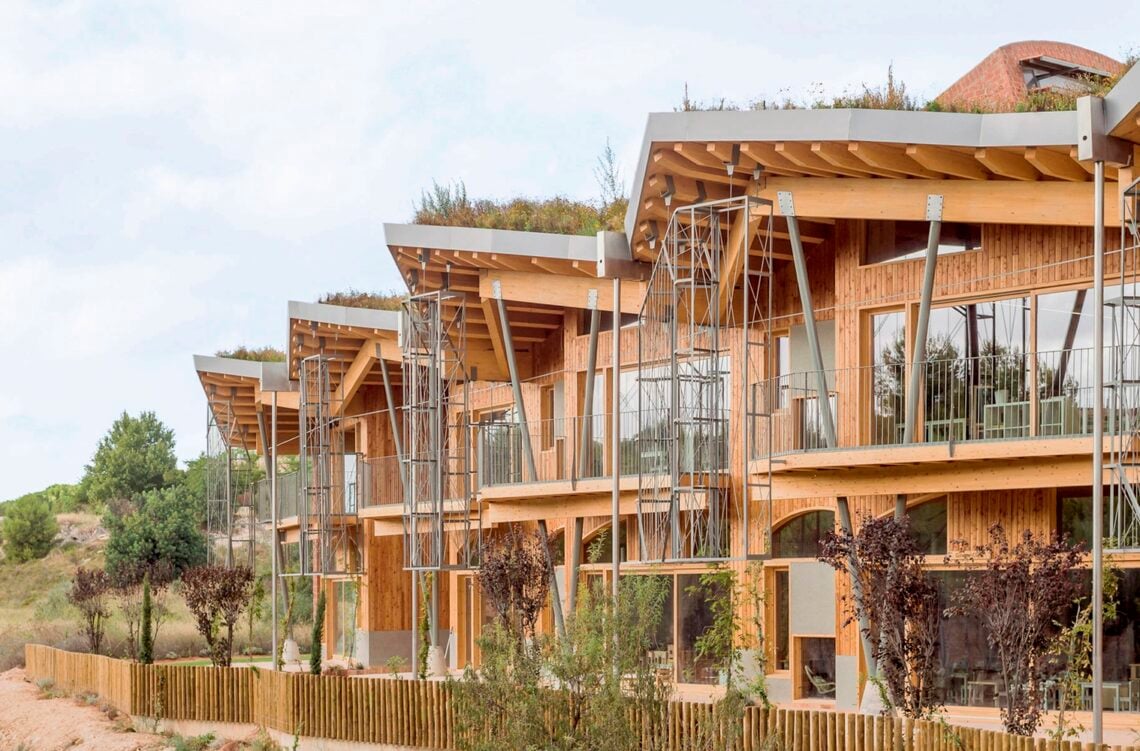

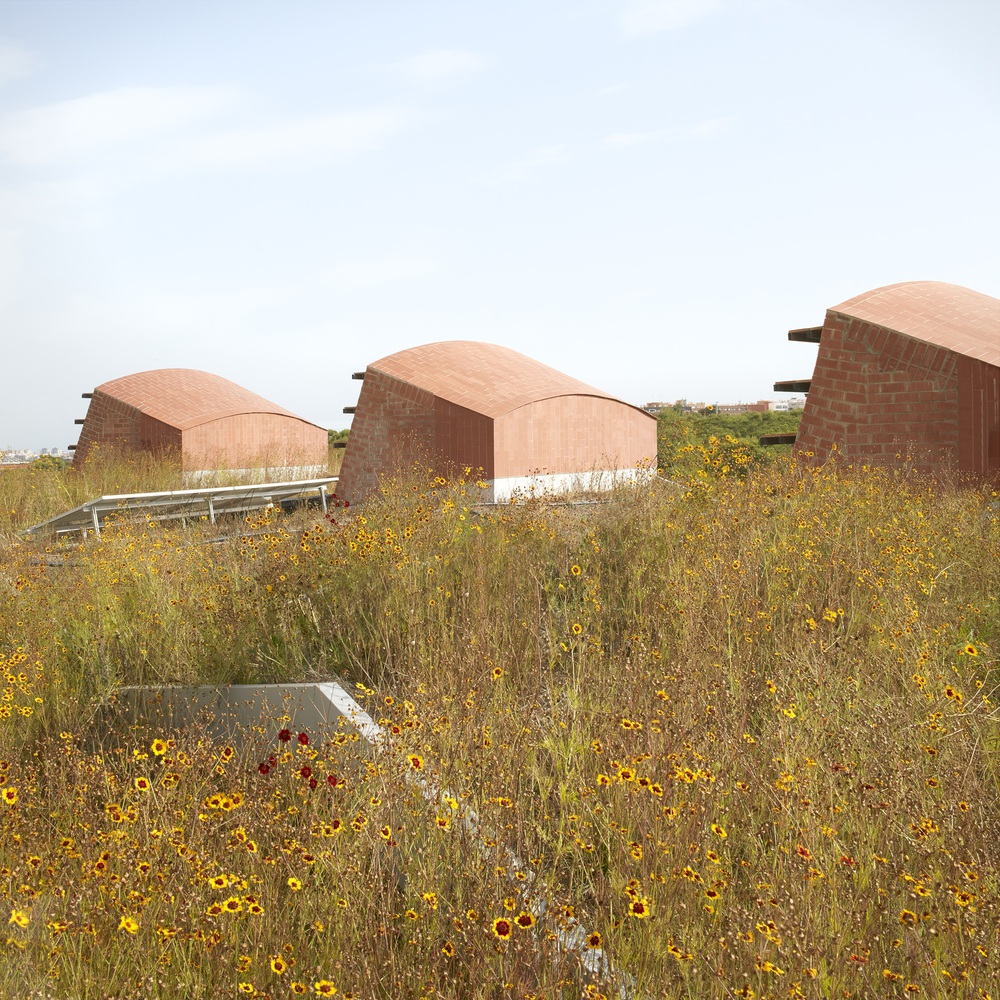



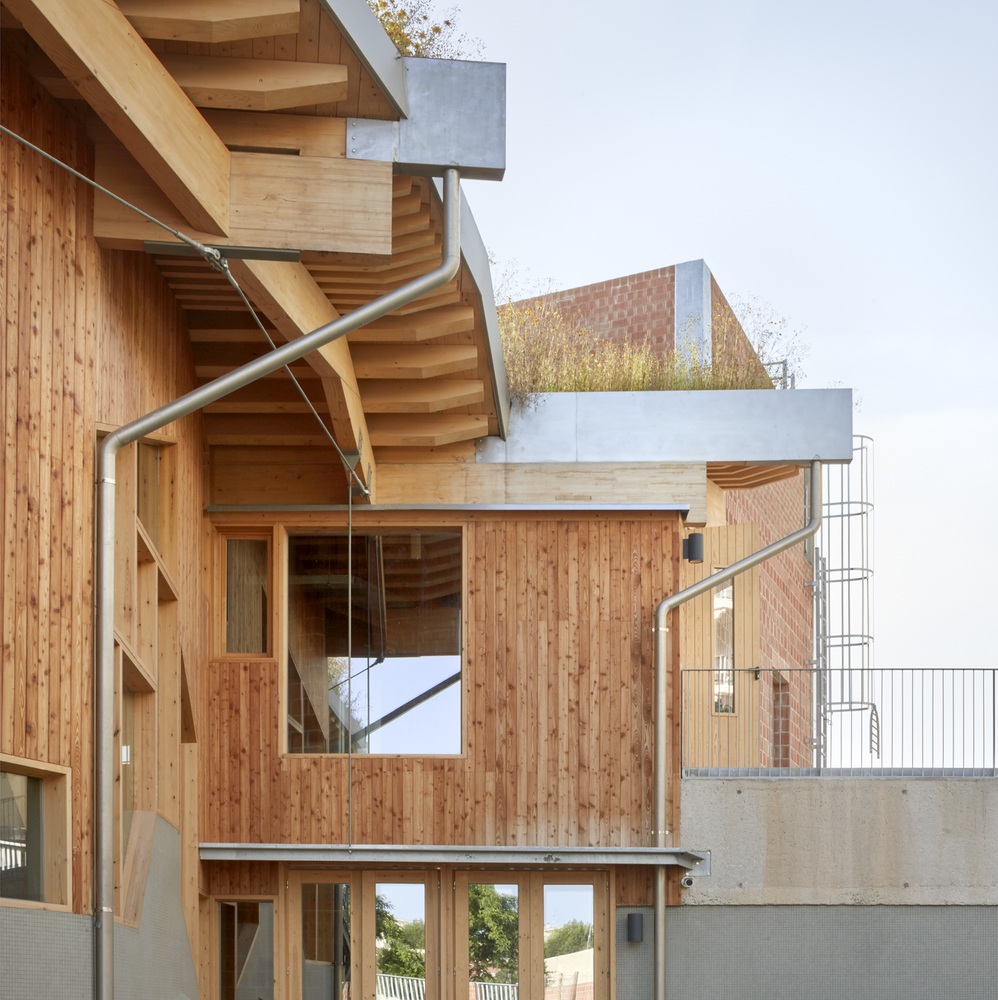


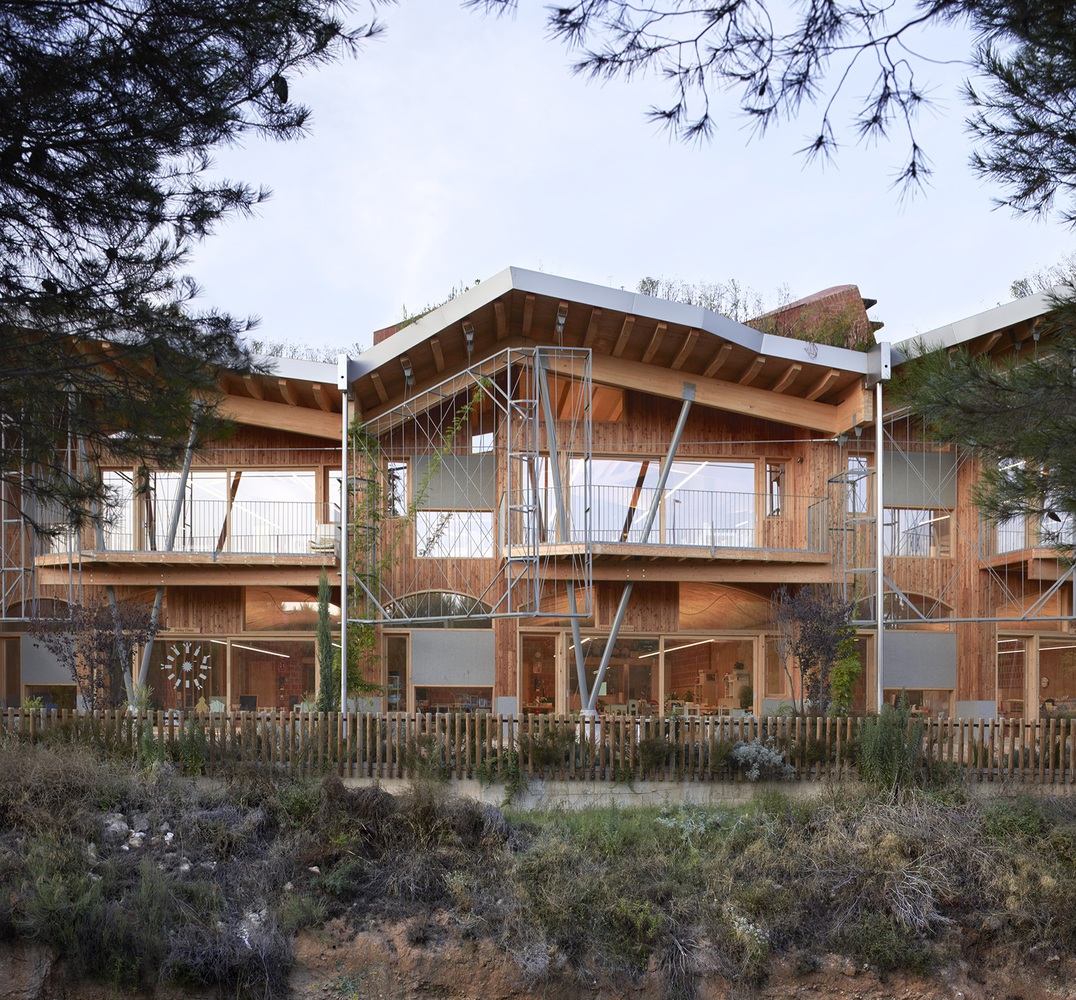
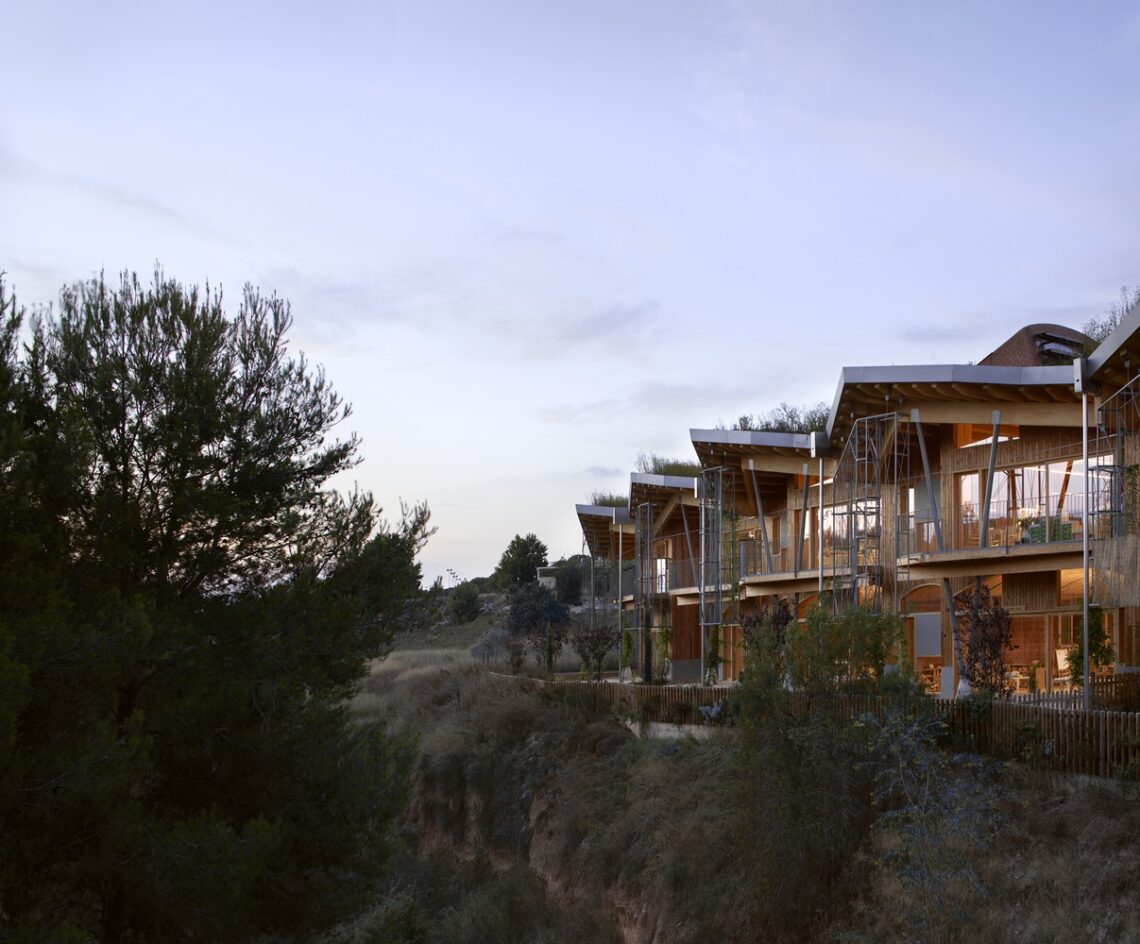
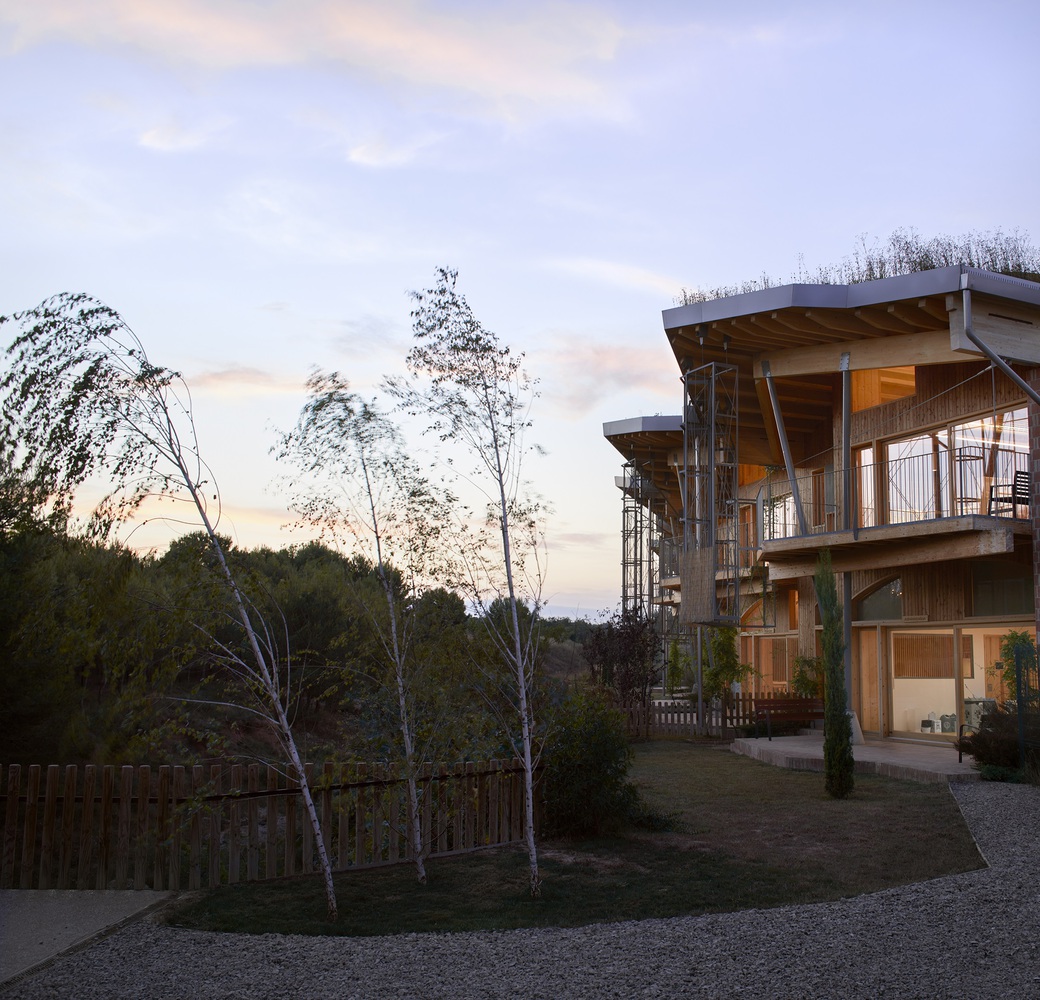
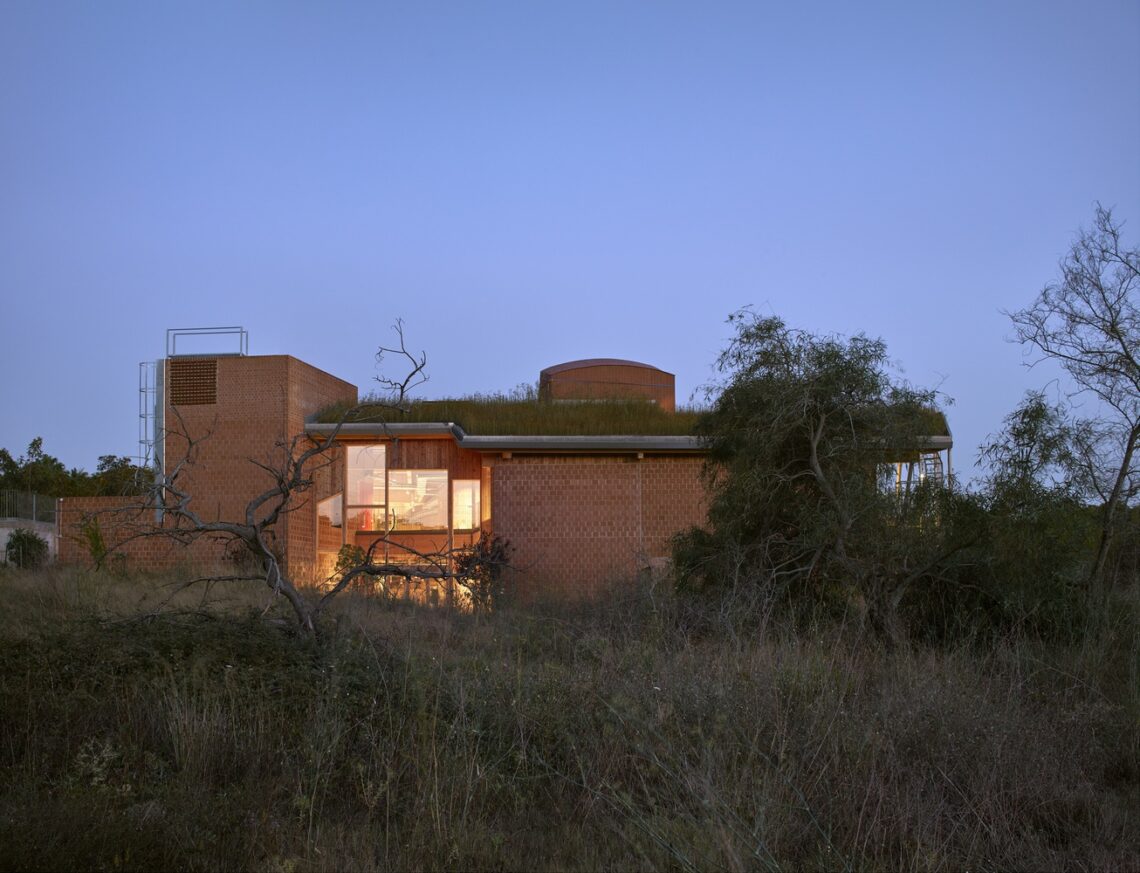
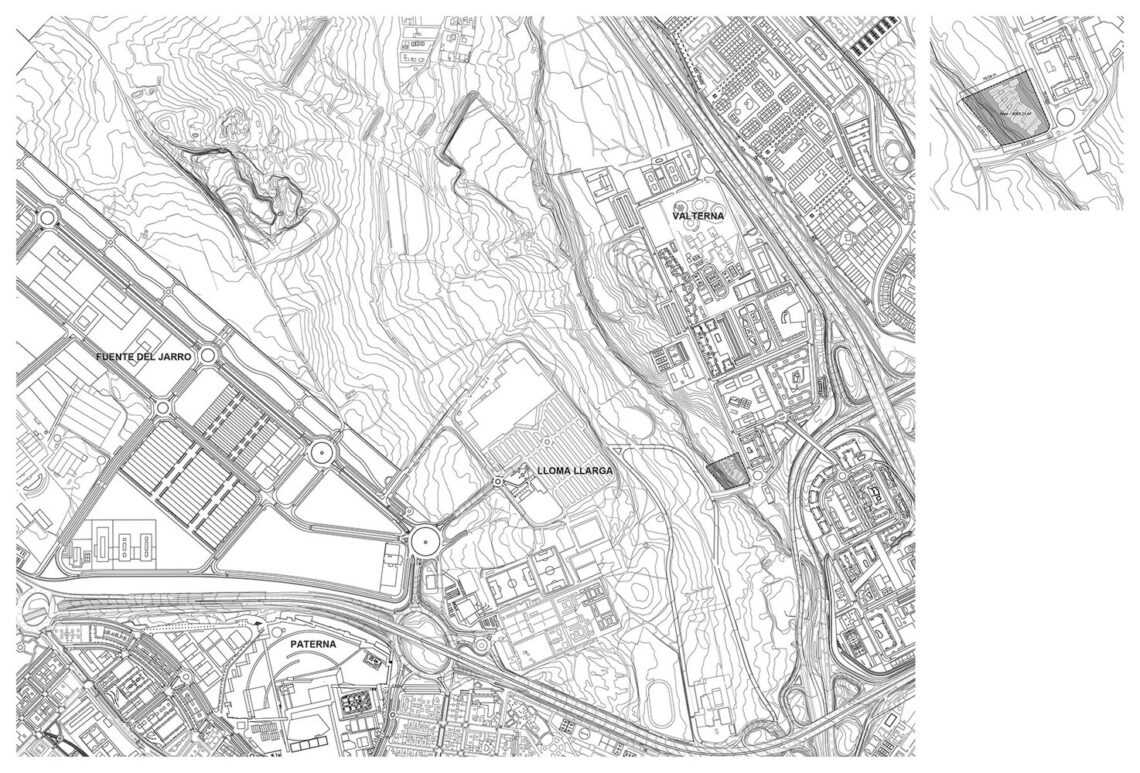

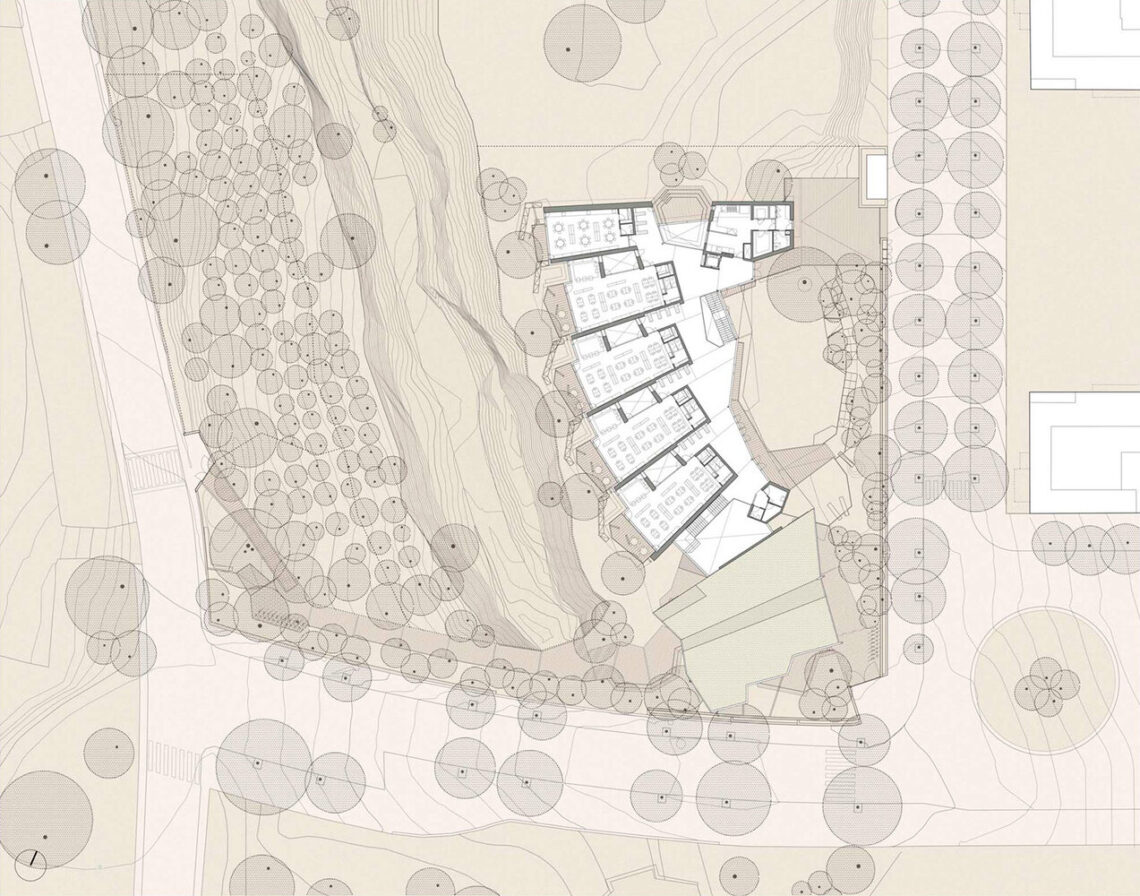
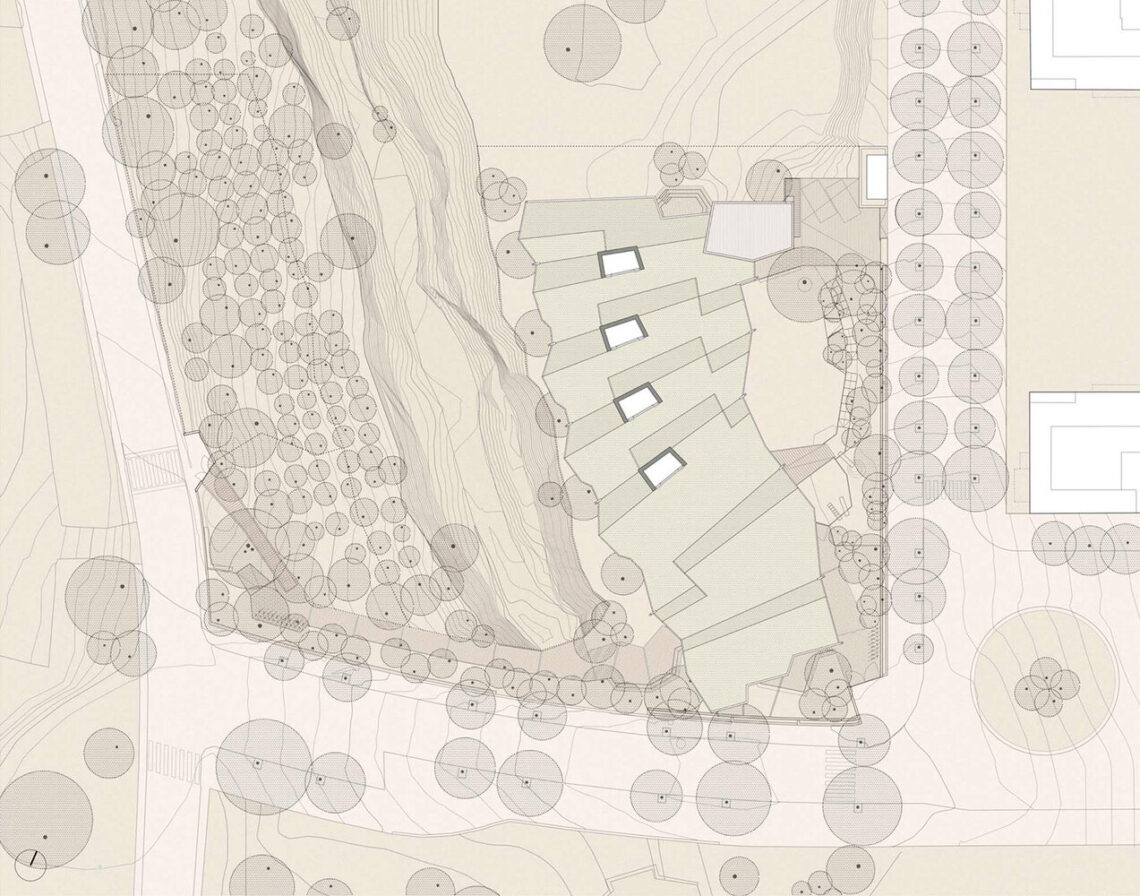
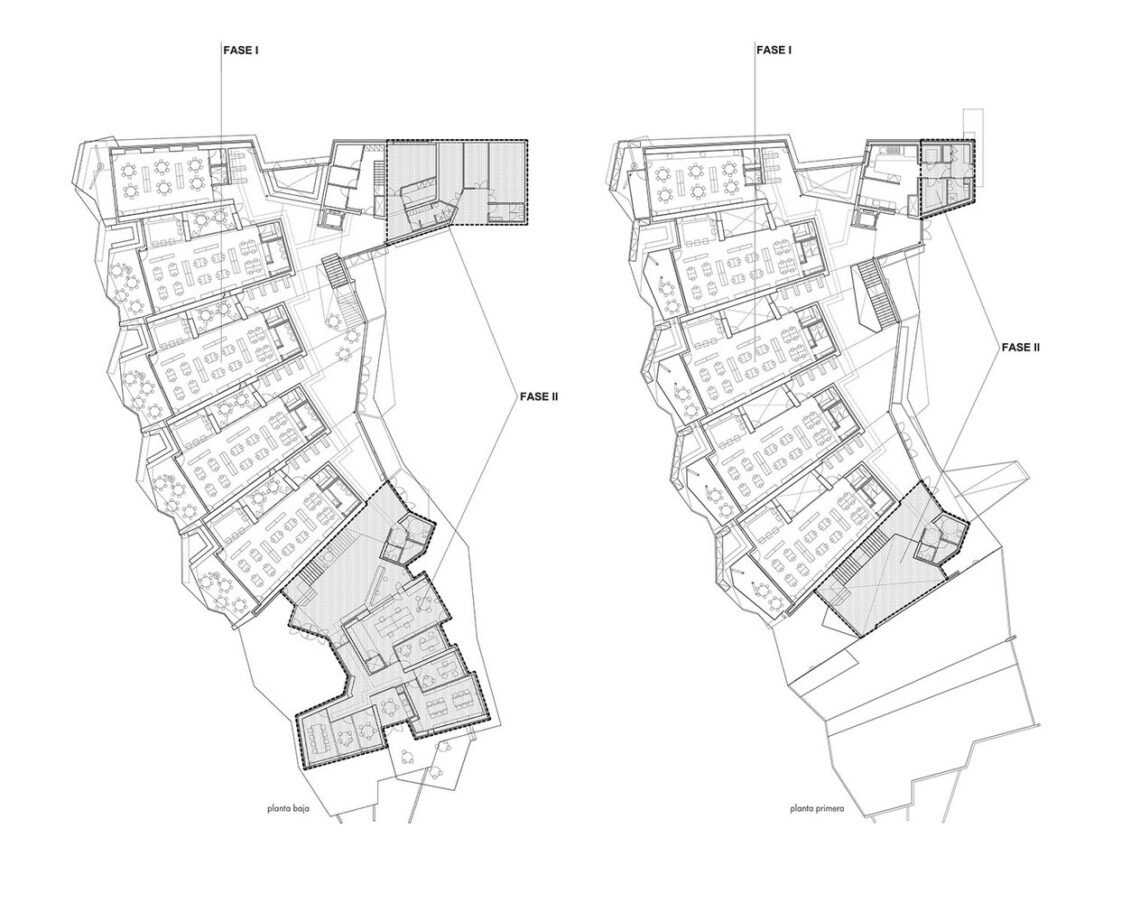
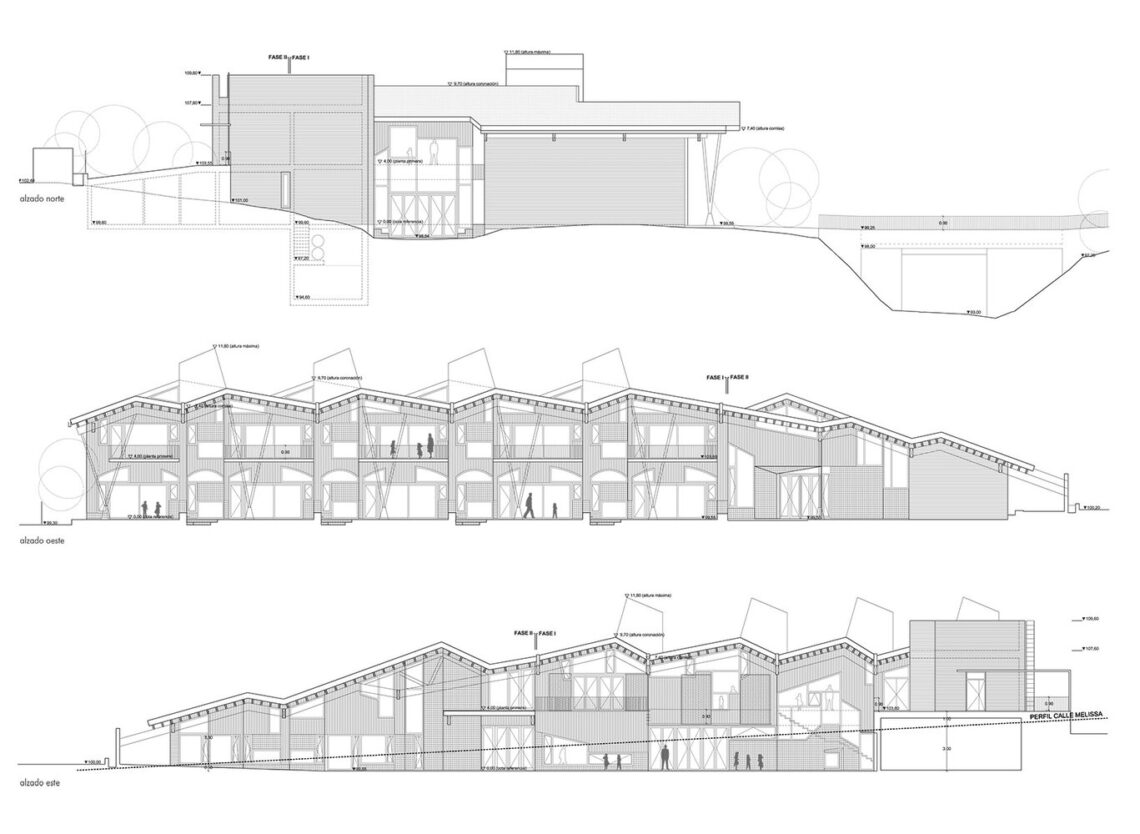

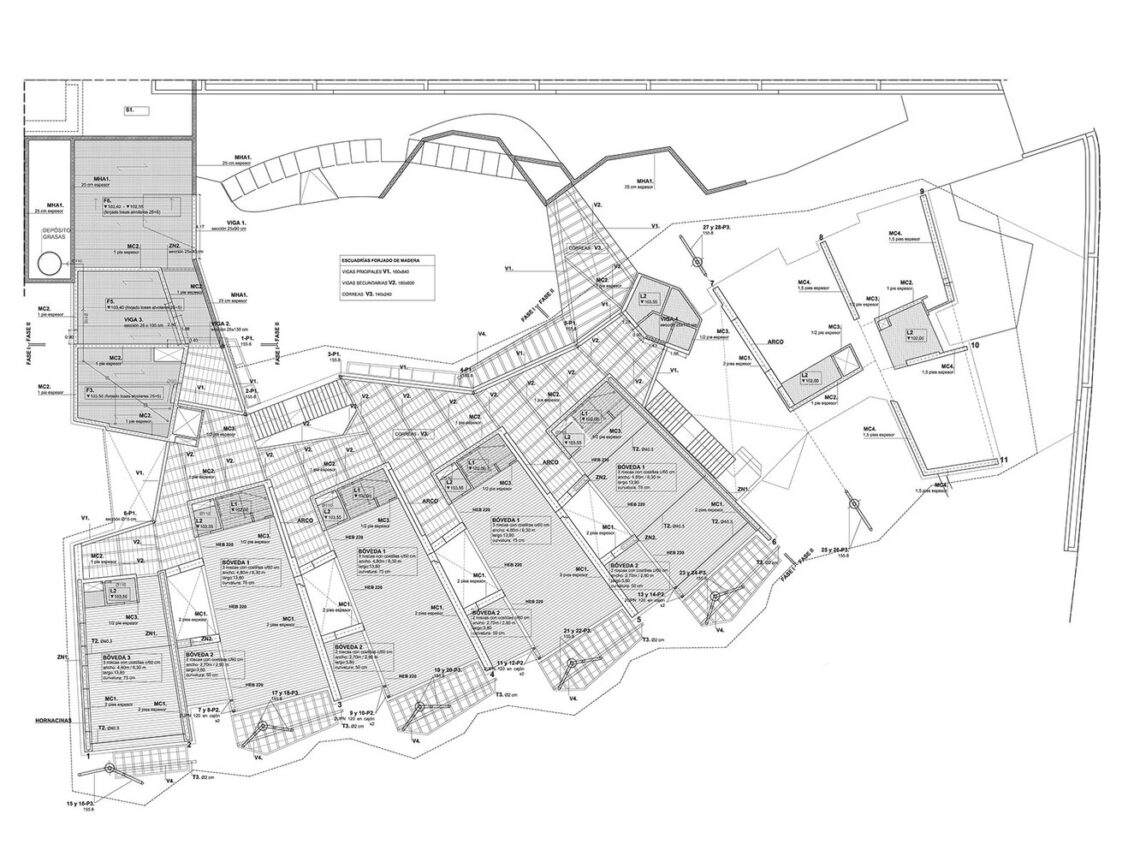
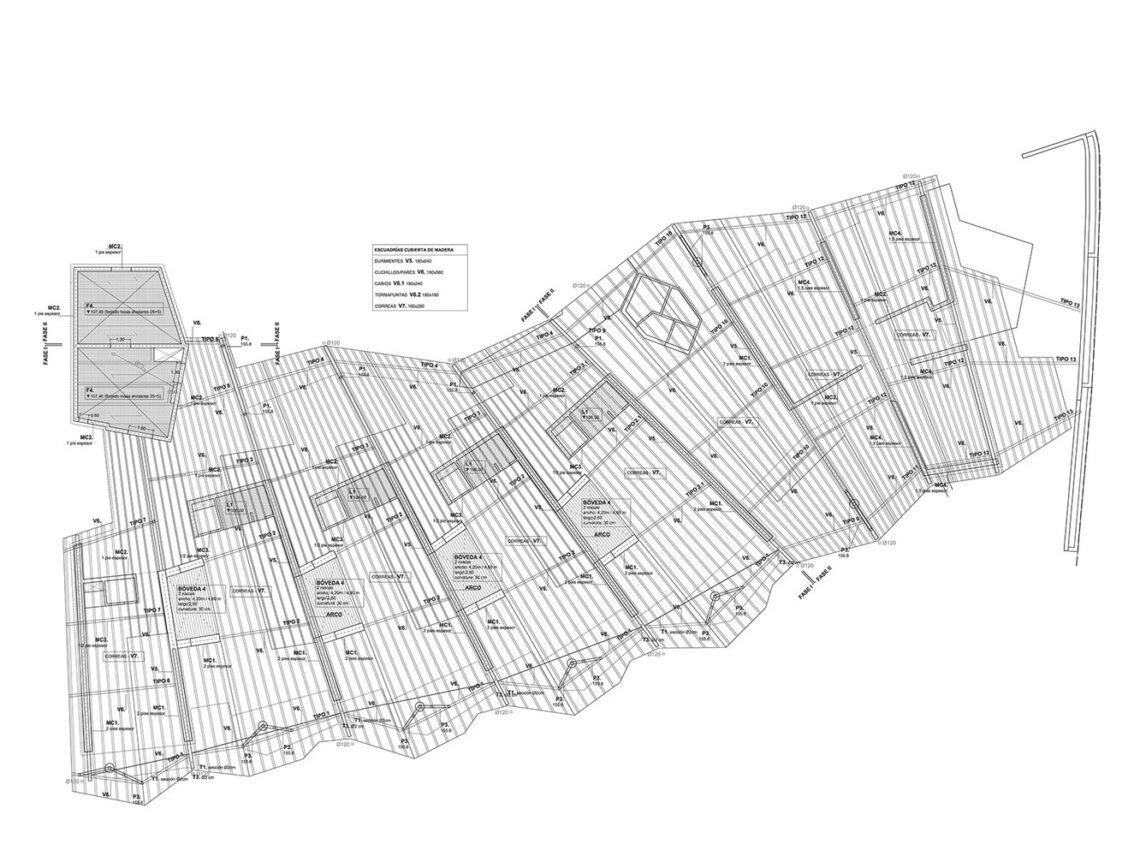

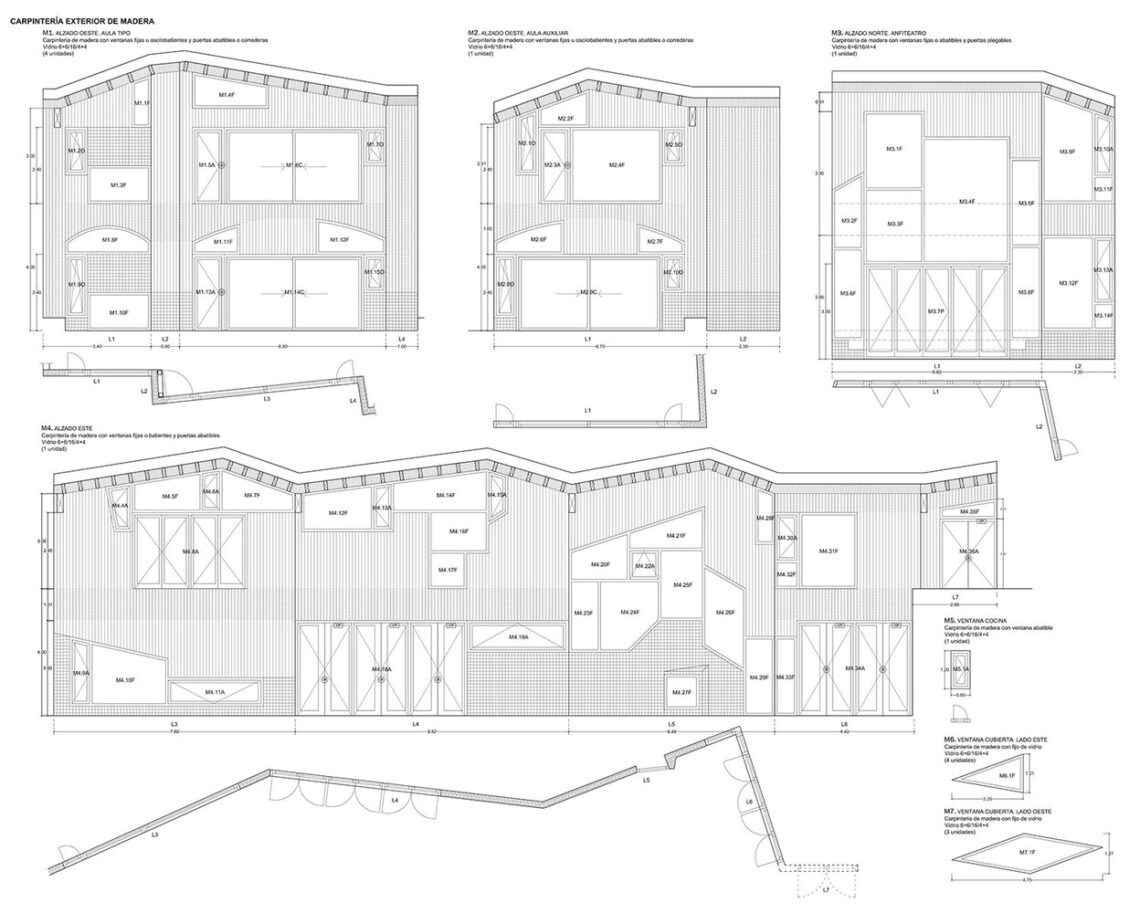
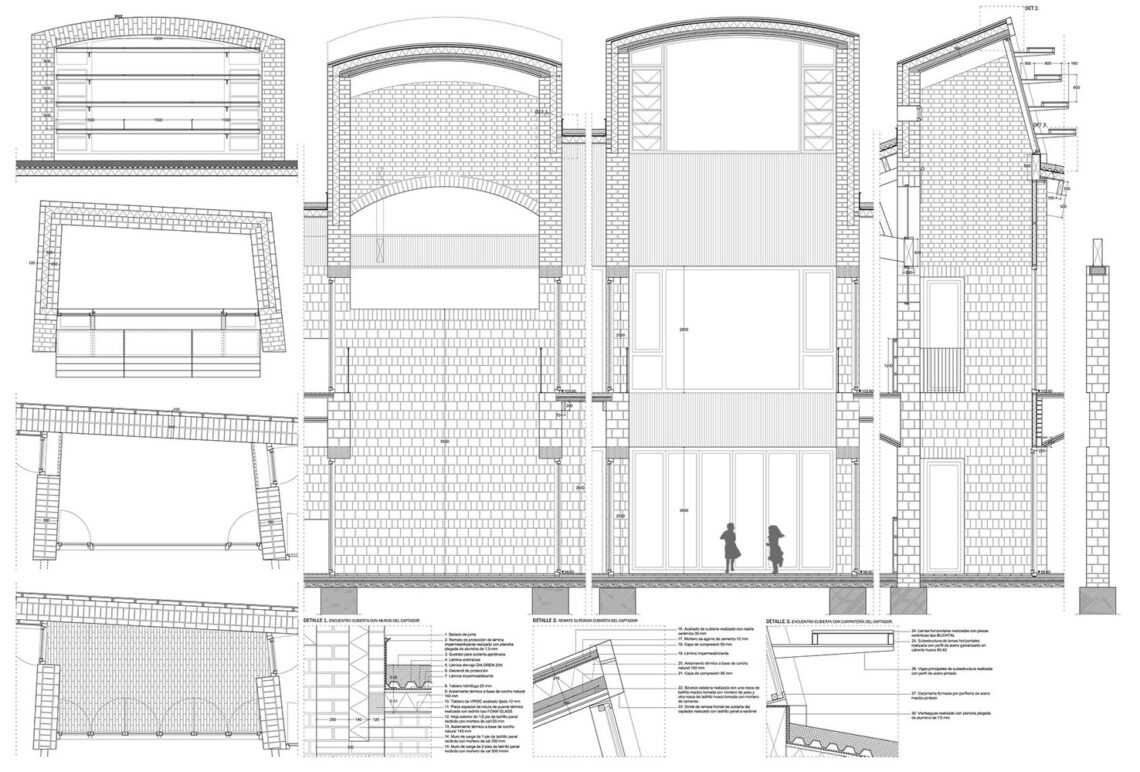
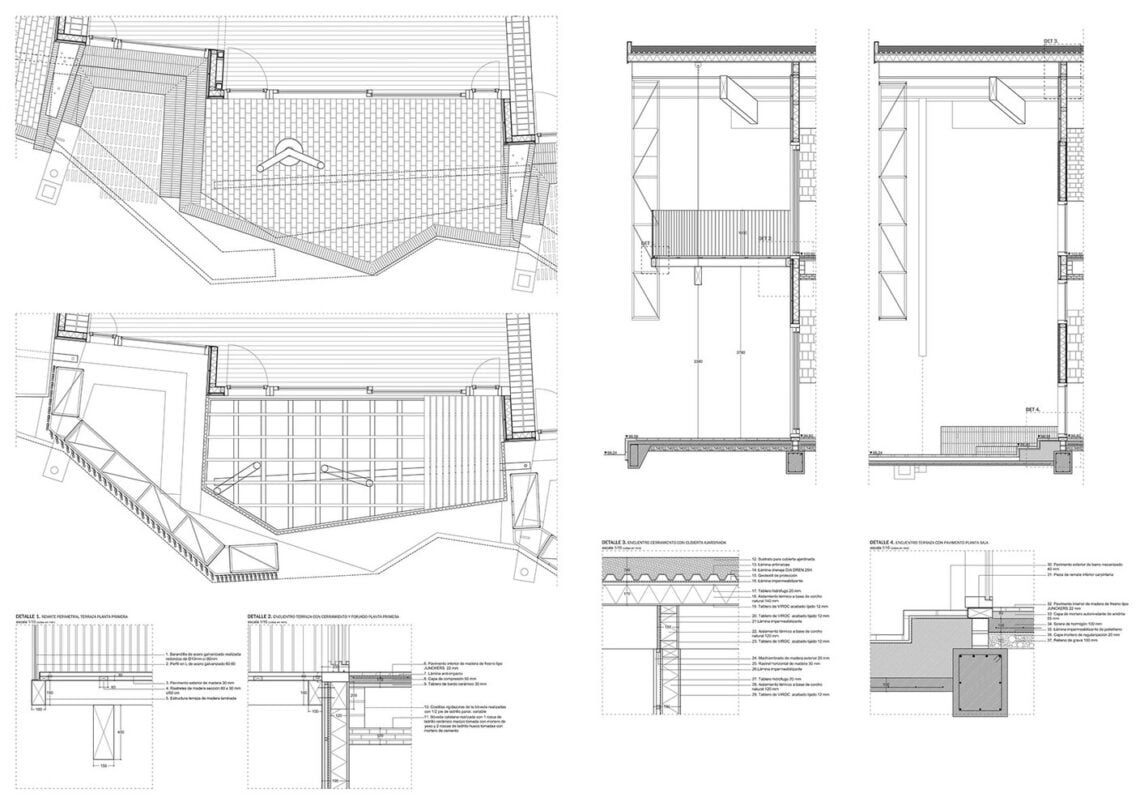
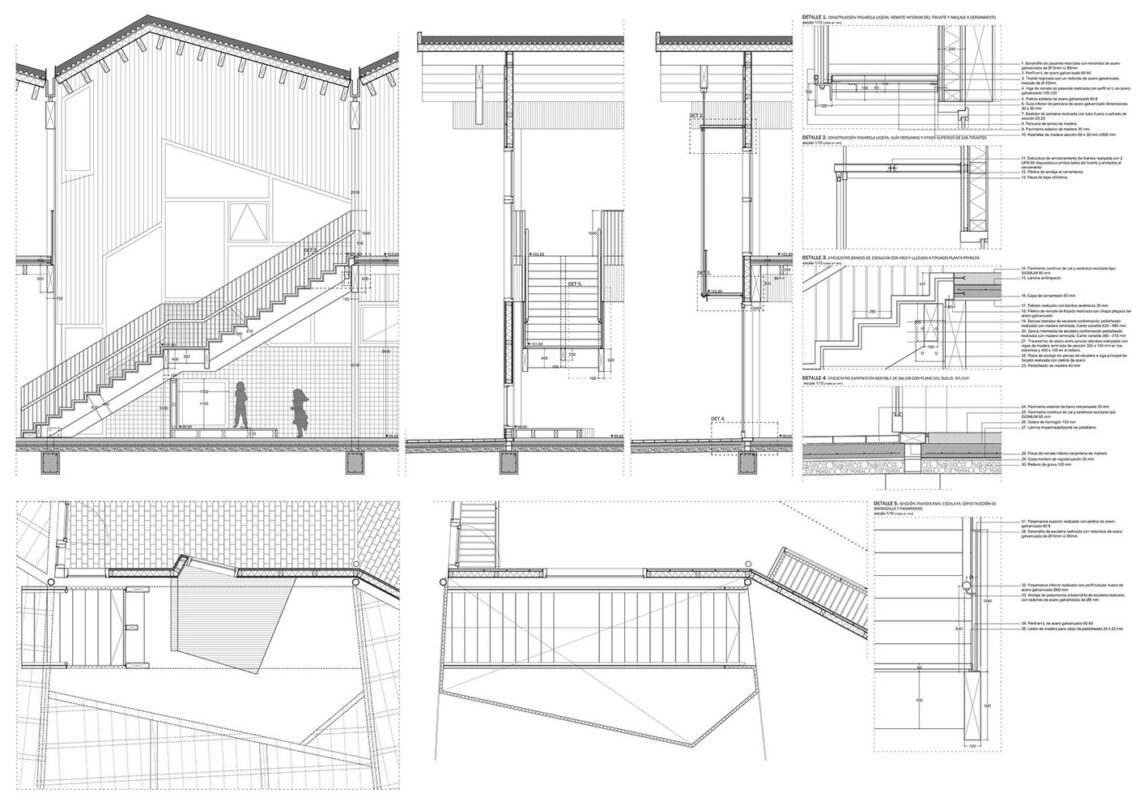
Project Location
Address: C. Melissa, 46, 46980 Paterna, Valencia, Spain
Location is for general reference and may represent a city or country, not necessarily a precise address.


